
To our surprise and frustration, we were only able to find one restaurant open and willing to serve us food when we arrived in Ban Phe. 7pm on a Friday in this otherwise busy transit hub and fishing village and only one place showing any signs of life. Weird. At the time, we felt quite fortunate, but that soon changed. Lori and I both found ourselves feeling quite ill in the early morning hours and couldn’t help but chalk it up to the Penang curry we had, given that we hadn’t eaten much else that day.
Luckily, our complimentary hostel breakfast was greasy and basic enough to settle our sour stomachs, if only for a couple of hours. Watching the colorful fishing and shrimping boats come into port was also a happy plus.
However, I’m sure Noe was very curious why his mommy kept disappearing to the restrooms for long periods of time during breakfast. Fortunately, he can’t talk yet, so we nipped that one in the bud pretty fast. But Lori and I both know it’s only a matter of time before all hell breaks loose with the never-ending torrent of questioning. All we can do is bask in the calm before the storm…
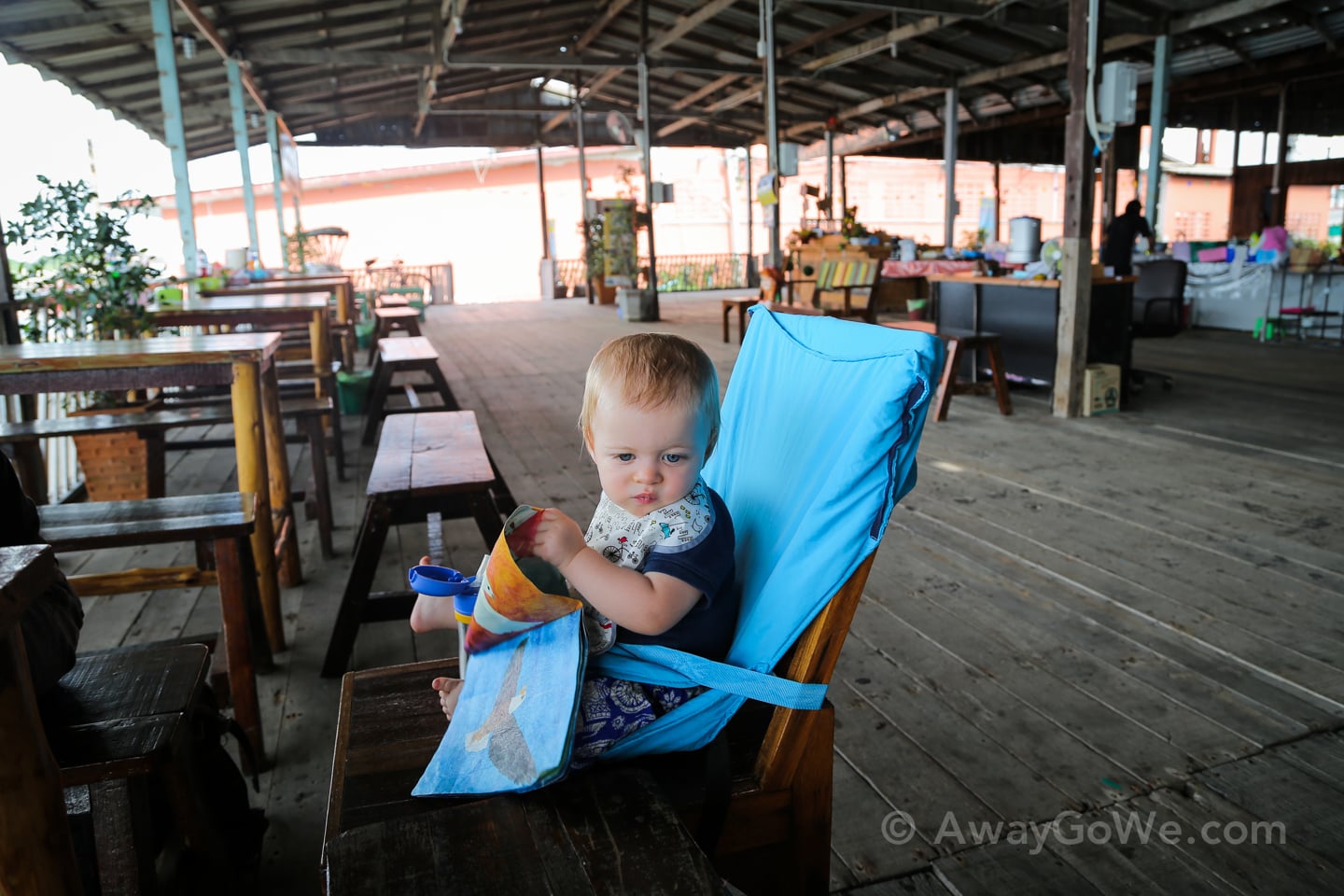
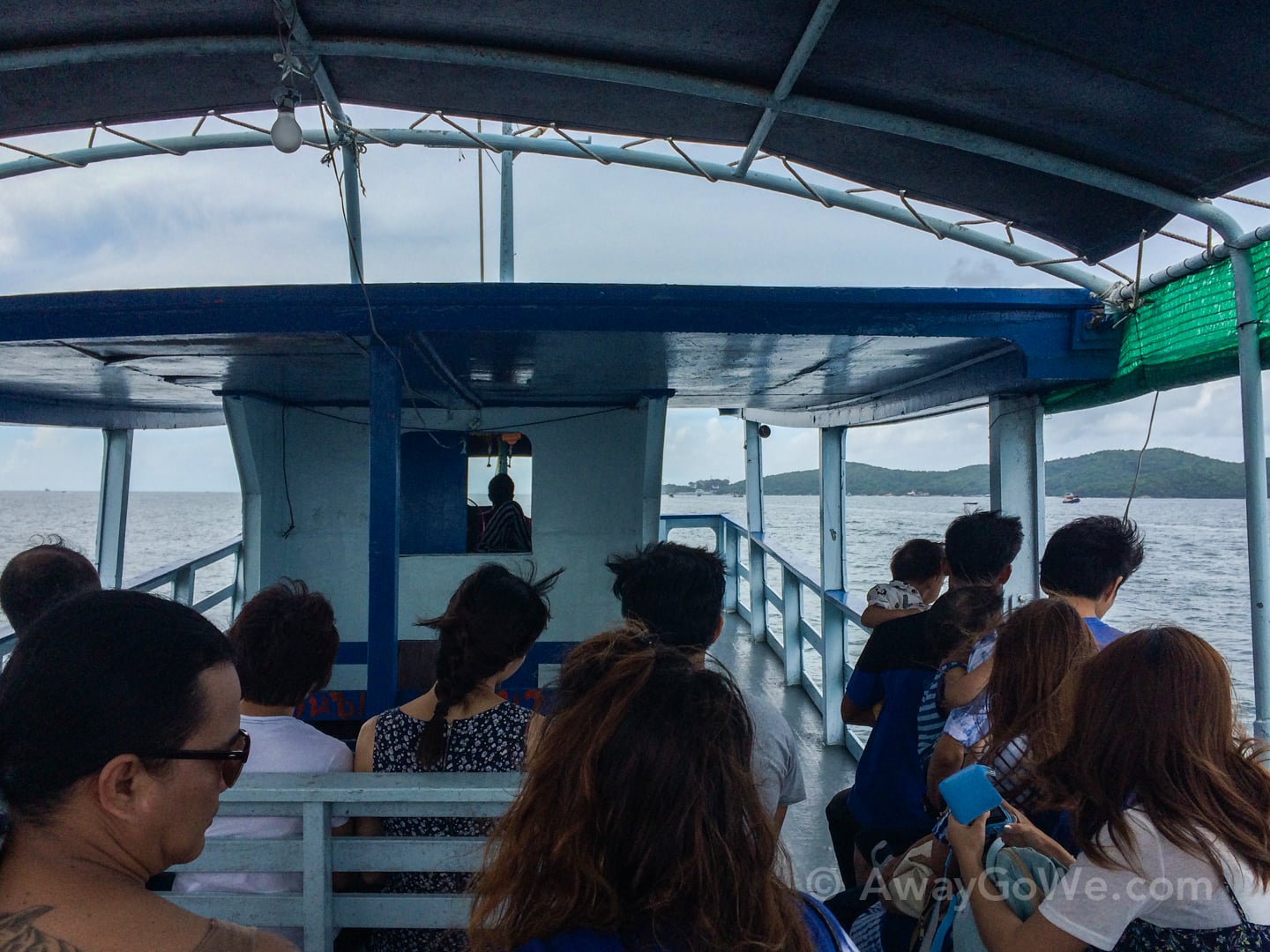
Catching the boat to Koh Samet was easy enough. We showed up at Nuanthip Pier, I bought a couple of roundtrip tickets for the next boat (like the bus from Bangkok’s Ekamai station, they leave hourly for much of the day), and sat around waiting until the Thai passengers got up and started moving toward the gangplank.
There was some confusion with our luggage as there was virtually no communication (verbal, hand gestures, or otherwise) signaling to us what we should do. Lori went ahead and grabbed a bench for us on the covered top deck while I made sure our luggage followed us on. It took some patience, but eventually (after most of the passengers had boarded), a young guy came by and tossed each of our bags on board. Done and done.

40 short minutes later, we arrived in paradise. Smooth sailing, even with a storm approaching.

After depositing us at the main NaDan pier, we paid a “maintenance” fee of 20 baht to enter the island (or rather, exit the pier facility), and found ourselves among a sea of green songteaus (pickups with two-rows of covered bench seats in the bed, a common sight throughout Thailand outside of Bangkok city center). There appeared to be two options for independent travelers getting to their final destinations on the island: Hire a private speedboat at Na Dan pier or jump on a shared songteau costing between 30-50 baht (US$1.00-US1.40) per passenger. We took a songteau, which took about 20 minutes after dropping off the other passengers at their resorts.
Oh, and there is a third option I forgot to mention — walking! Lori and I agreed that if we hadn’t had our two suitcases and portable crib, that we might have very well chosen to walk to our destination. In hindsight, this may not have been the smartest move, but certainly would have been more of an adventure, and certainly would have saved us $3.00 (which, in our backpacking days would have been 100% justified, being roughly equal to 2-3 large beers!)
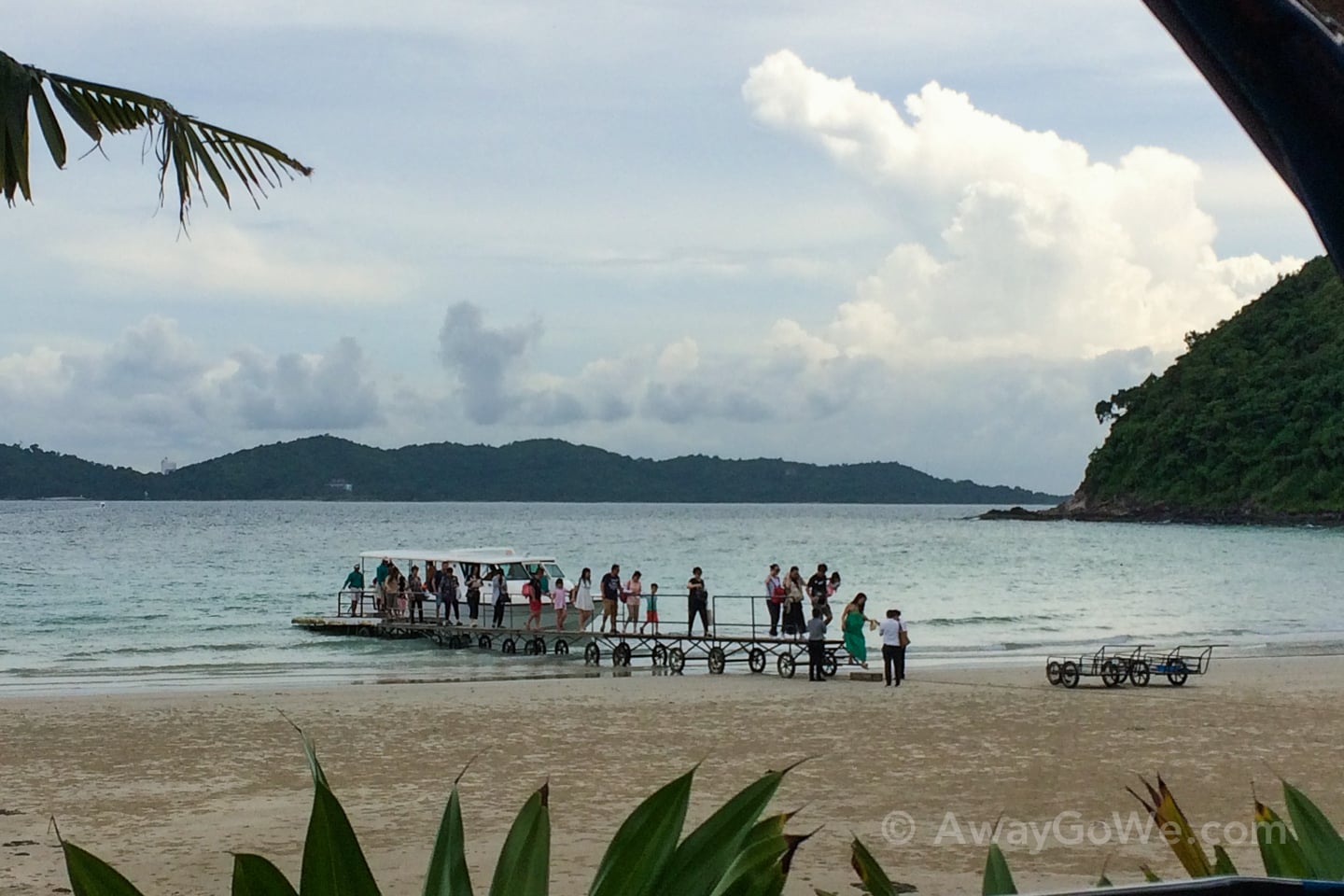
Our songteau’s first stop was swanky looking Ao Phrao where ALL of our fellow passengers got off. It’s here that we got our first ever glimpse of a portable dock. It would, after all, be a shame to get your legs wet at the beach.
Nearly all of the accommodation in this particular cove was quite a bit pricier than what we spent at ours. Now, why a couple would spend US$150 per night in low season on a beach cabana and opt for a shared public pickup instead of the $10 speedboat to get there is beyond me. Flashpackers…?

Our songteau headed south a short distance before turning off on an abysmal excuse for a road (more like a rutted wash), slowly creeping its way down to Tubtim beach. At that moment we knew we picked the right beach for us!
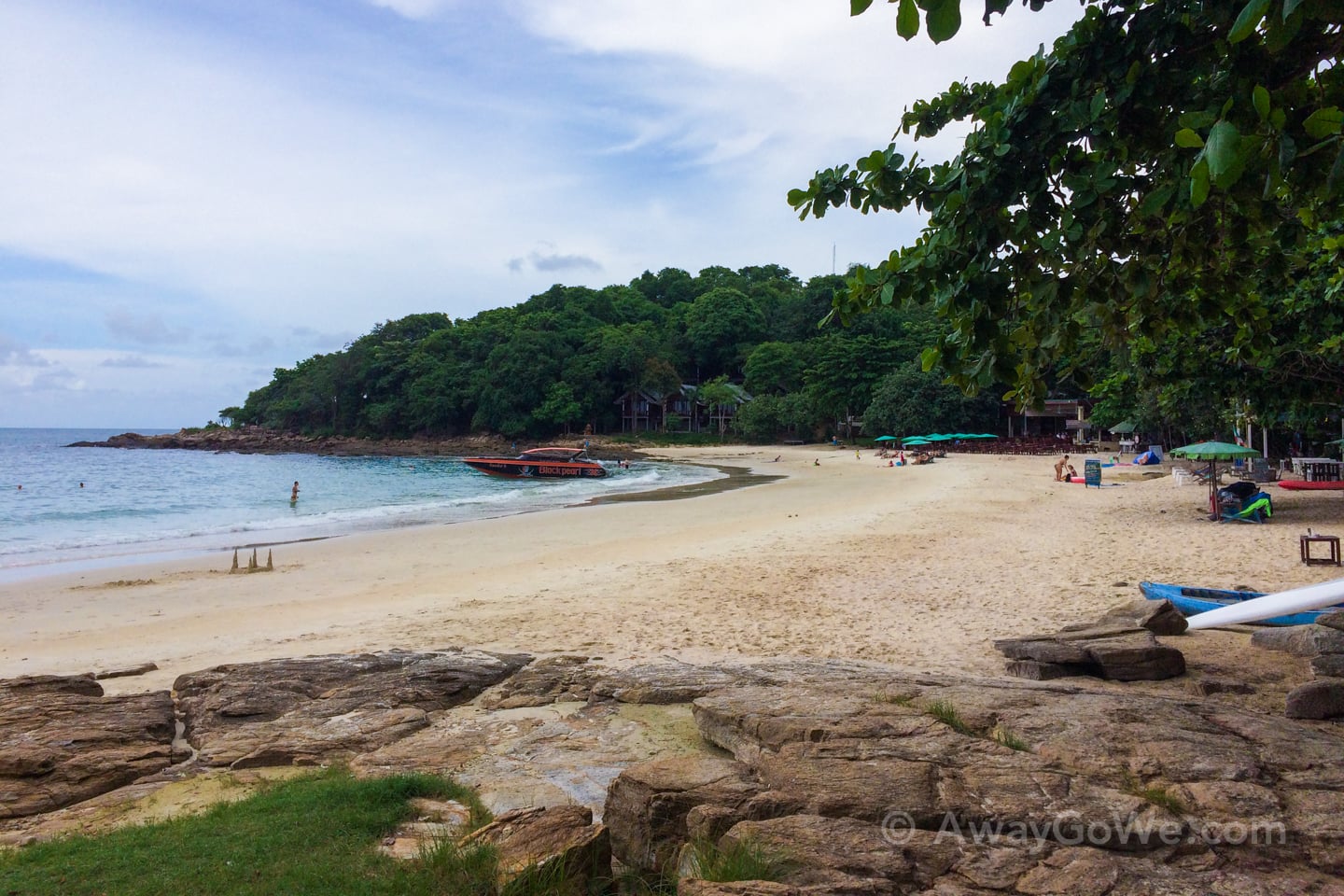
Tubtim is the last of a long string of developed coves beginning with the busiest, Sai Kaew Beach, at the northeastern end of the island. This mile long stretch could easily have been mistaken for one long continuous beach if not for the three or four small, rocky headlands marking the end of one beach and the beginning of the next. Tubtim’s location at the southern end of this developed string gives it a unique feeling of relative peace and isolation while affording easy access to the bulk of the restaurants, bars and other services on Koh Samet.
The majority of the island’s length still stretches out south of Tubtim, but the coves become more isolated and less developed the farther south you go.
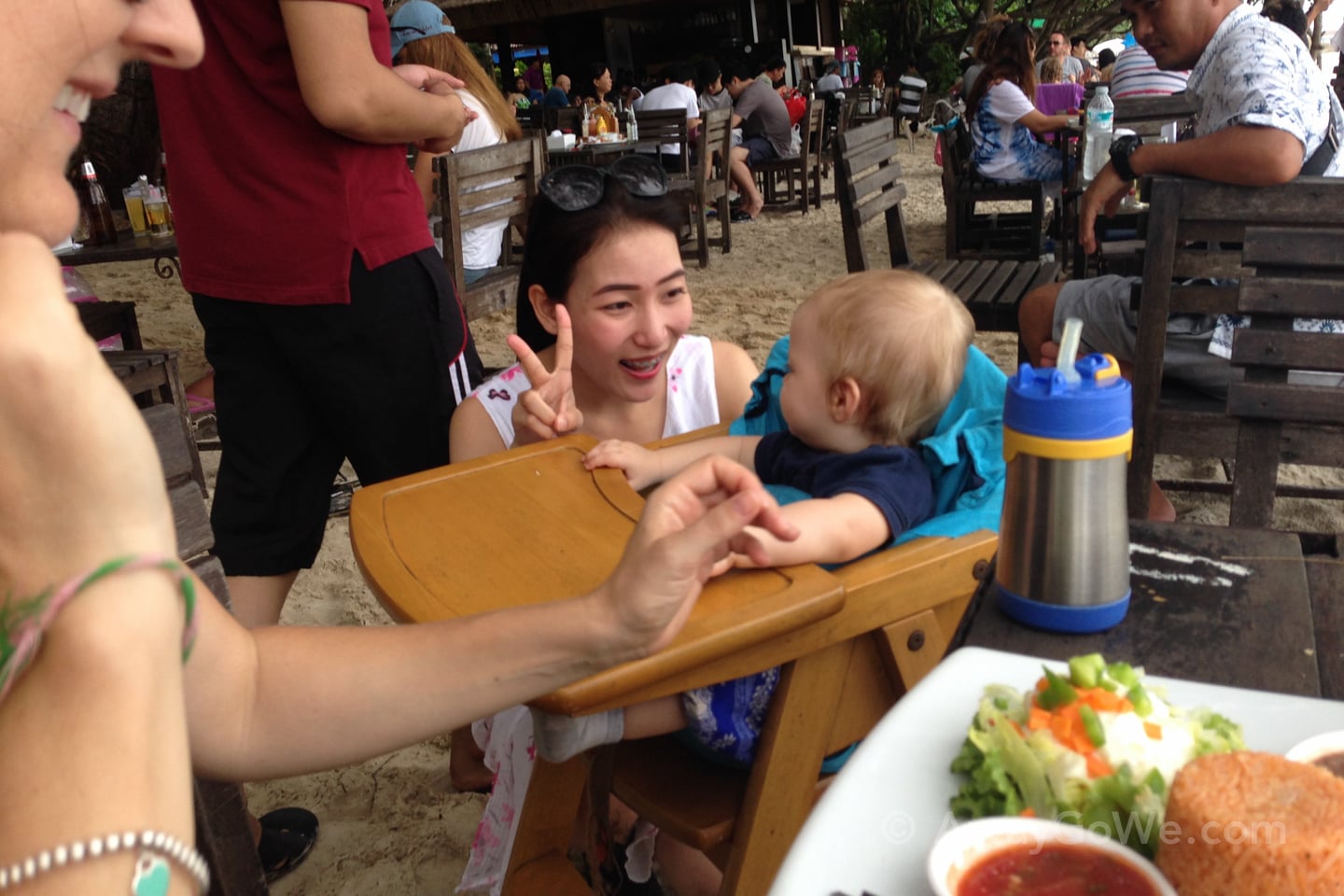
Noe seems to have fans no matter where we go, though it seems he may be beginning to get fed up with his celebrity status.
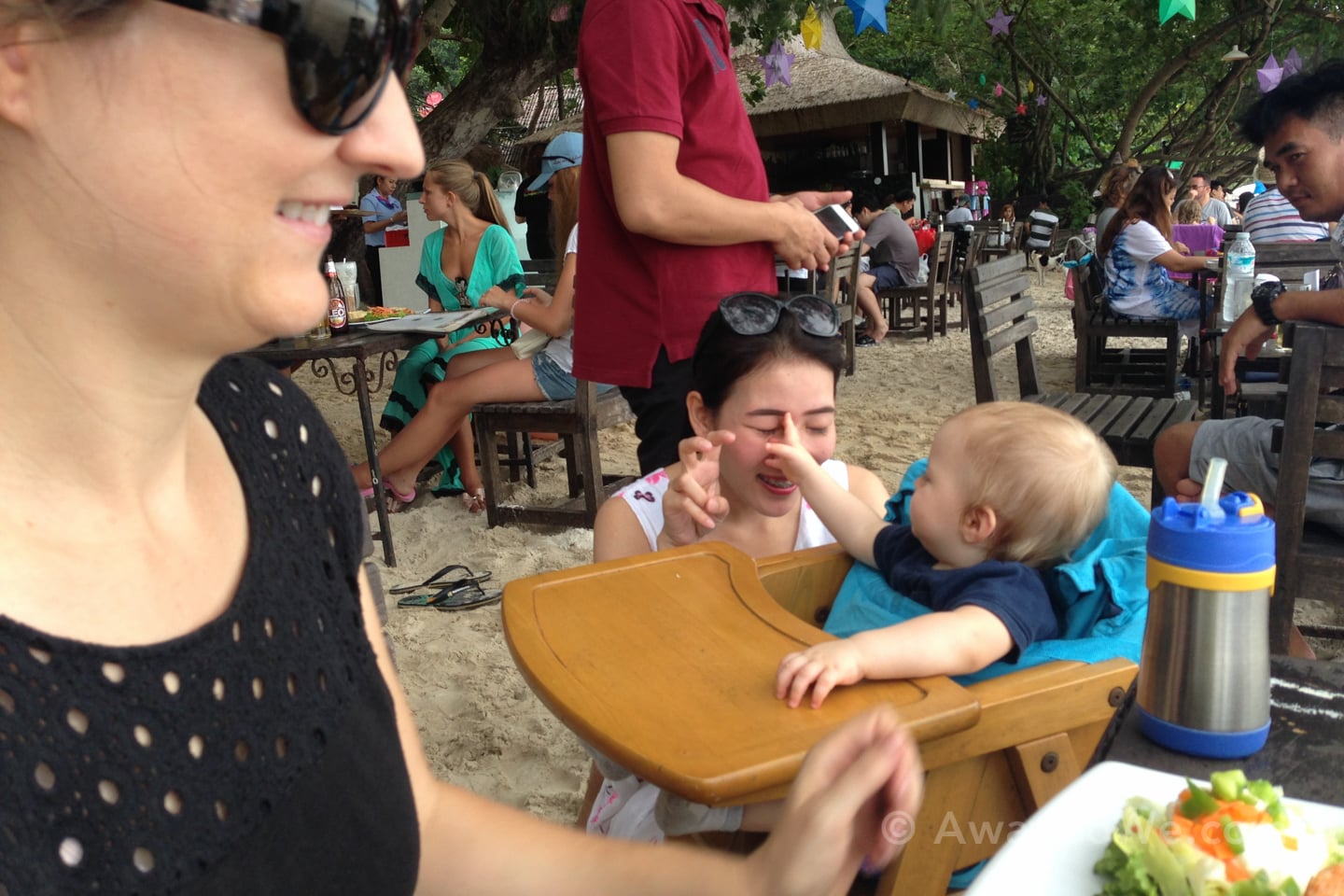
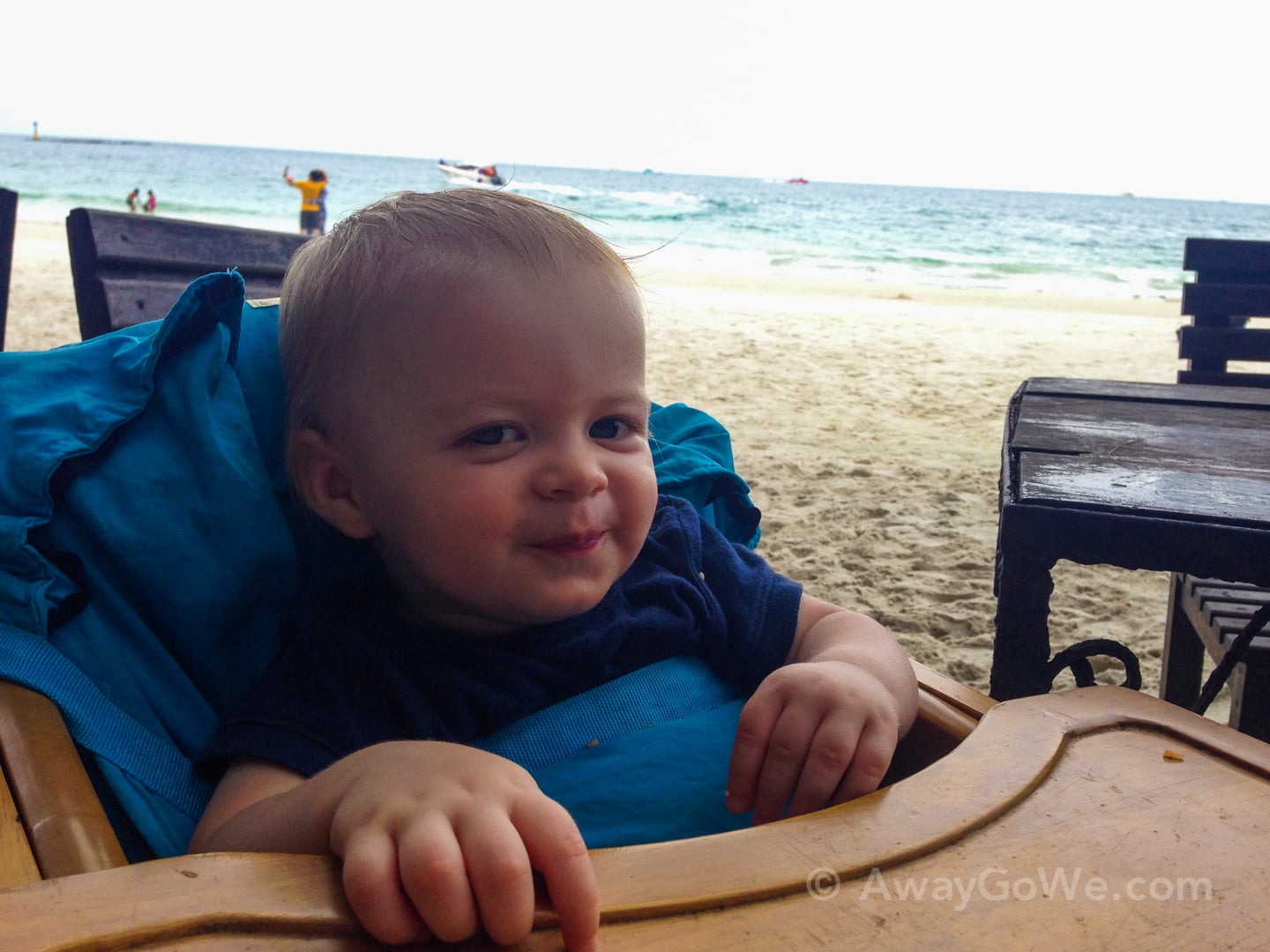
Mommy is certainly not immune to his antics either, these days.
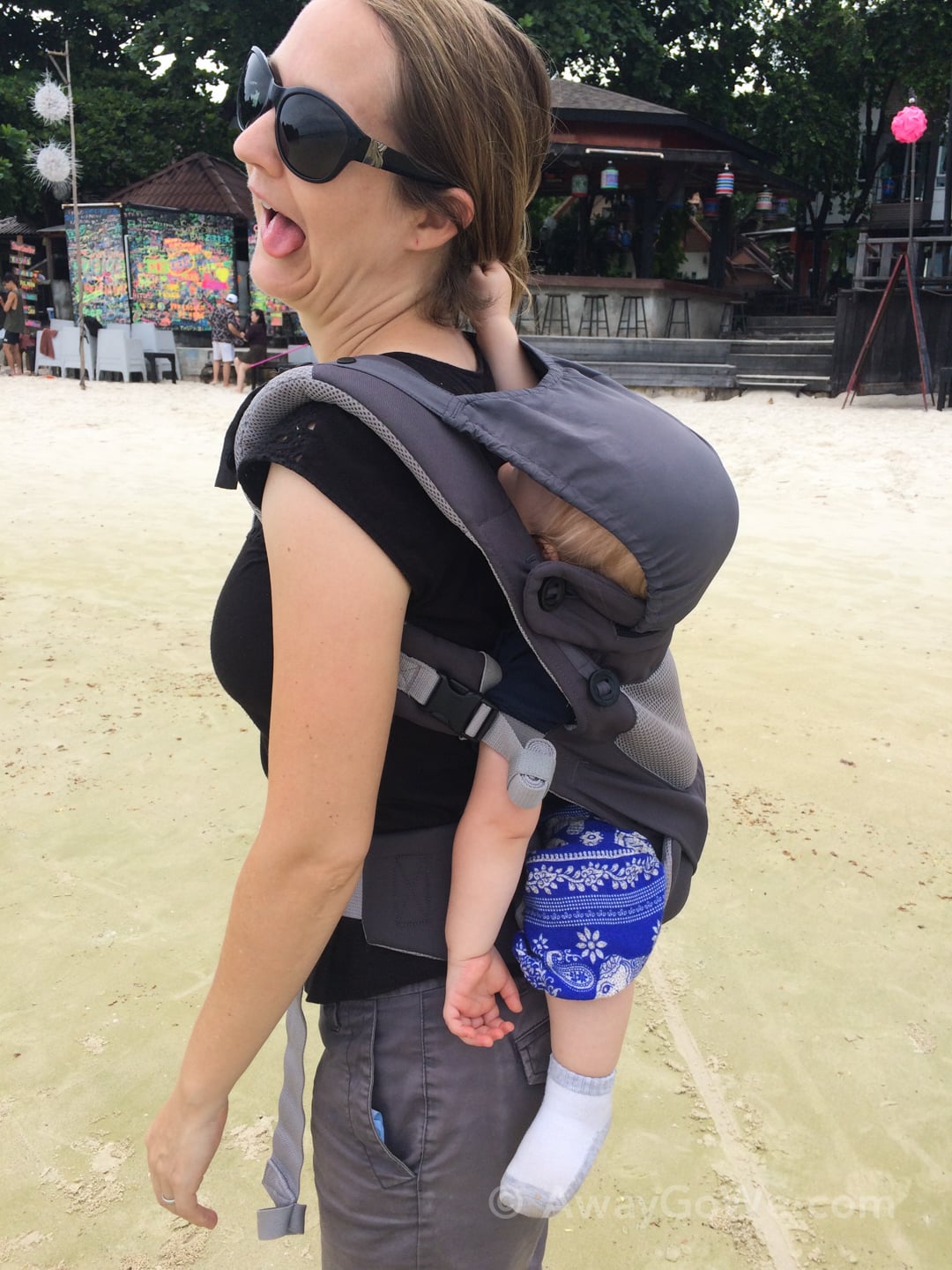
Nothing that a quiet stroll along the beach couldn’t fix.
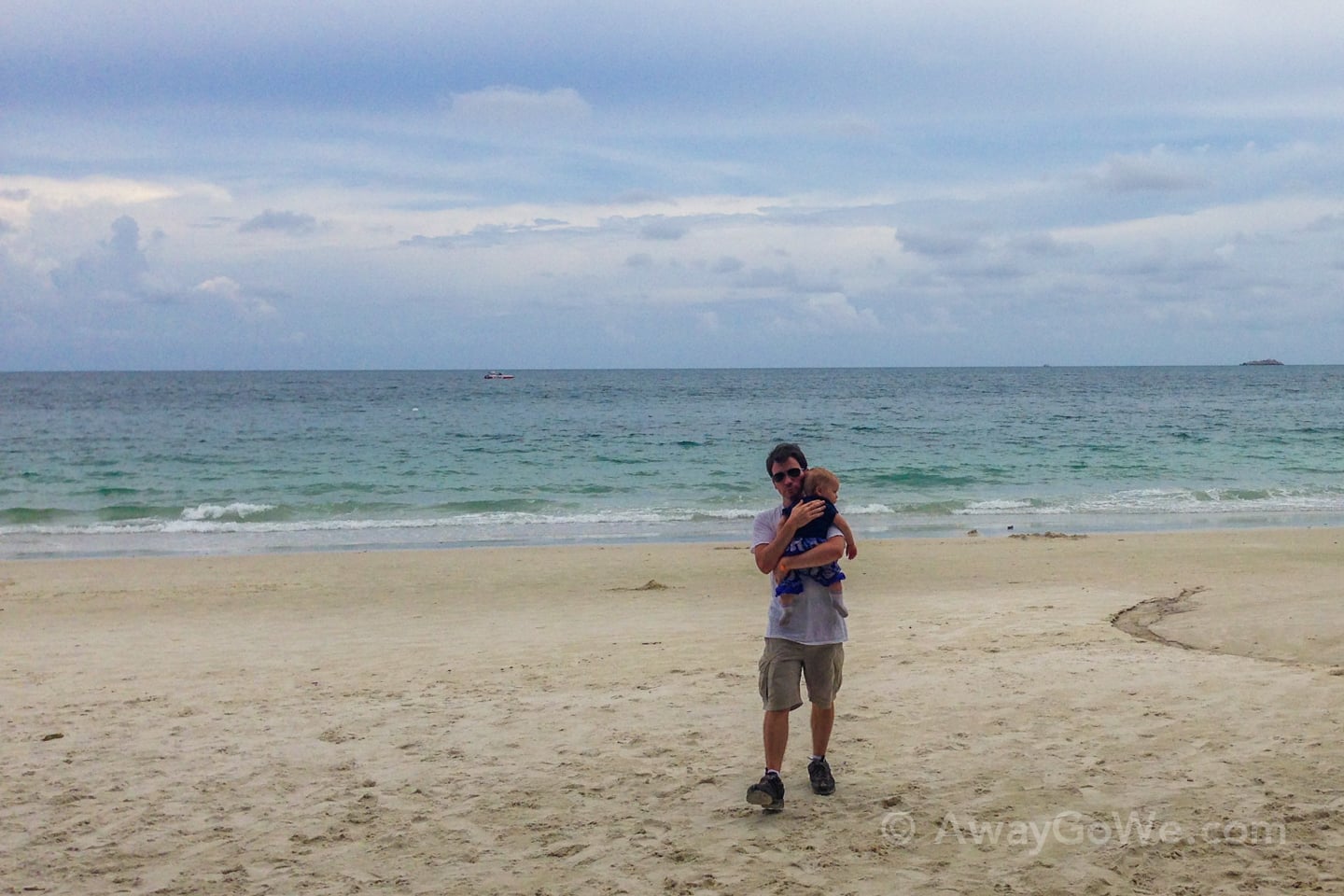
We were very pleased with Tubtim Resort. It’s hard to know what to expect, even with TripAdvisor and all the many tools available to online bookers now. Still, even in 2017, booking a place in advance, sight unseen, always carries risks, no matter how good the reviews are — as does booking a fan bungalow with no A/C in the tropics.
Oftentimes, a fan room at the beach is awesome, particularly if you’re close enough to the water to catch a nice steady breeze. This was true of the majority of places we stayed in Belize. However, we’ve had enough experience with fan-only “beach” bungalows tucked up into the jungle with no hope of a breeze to still be wary.
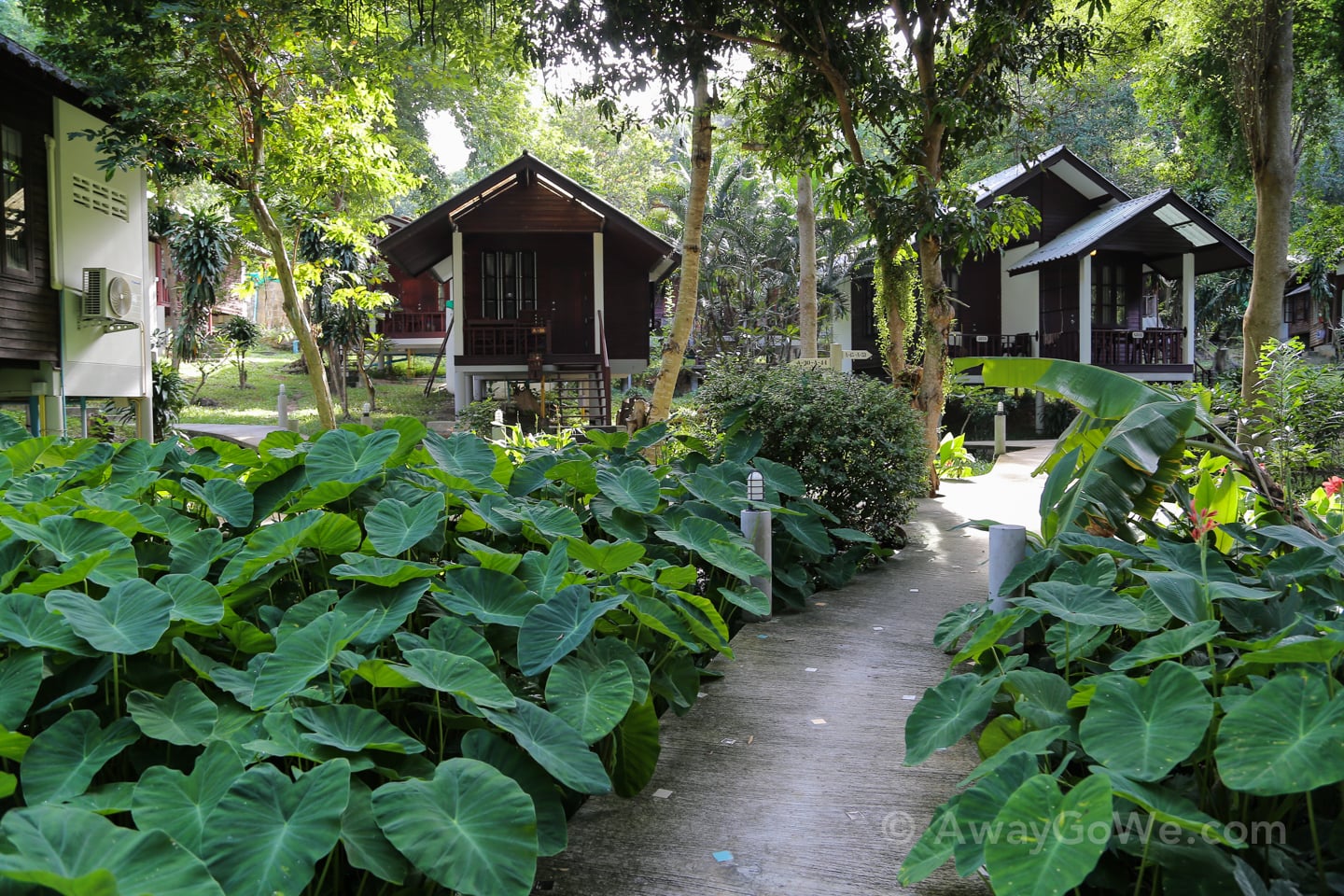
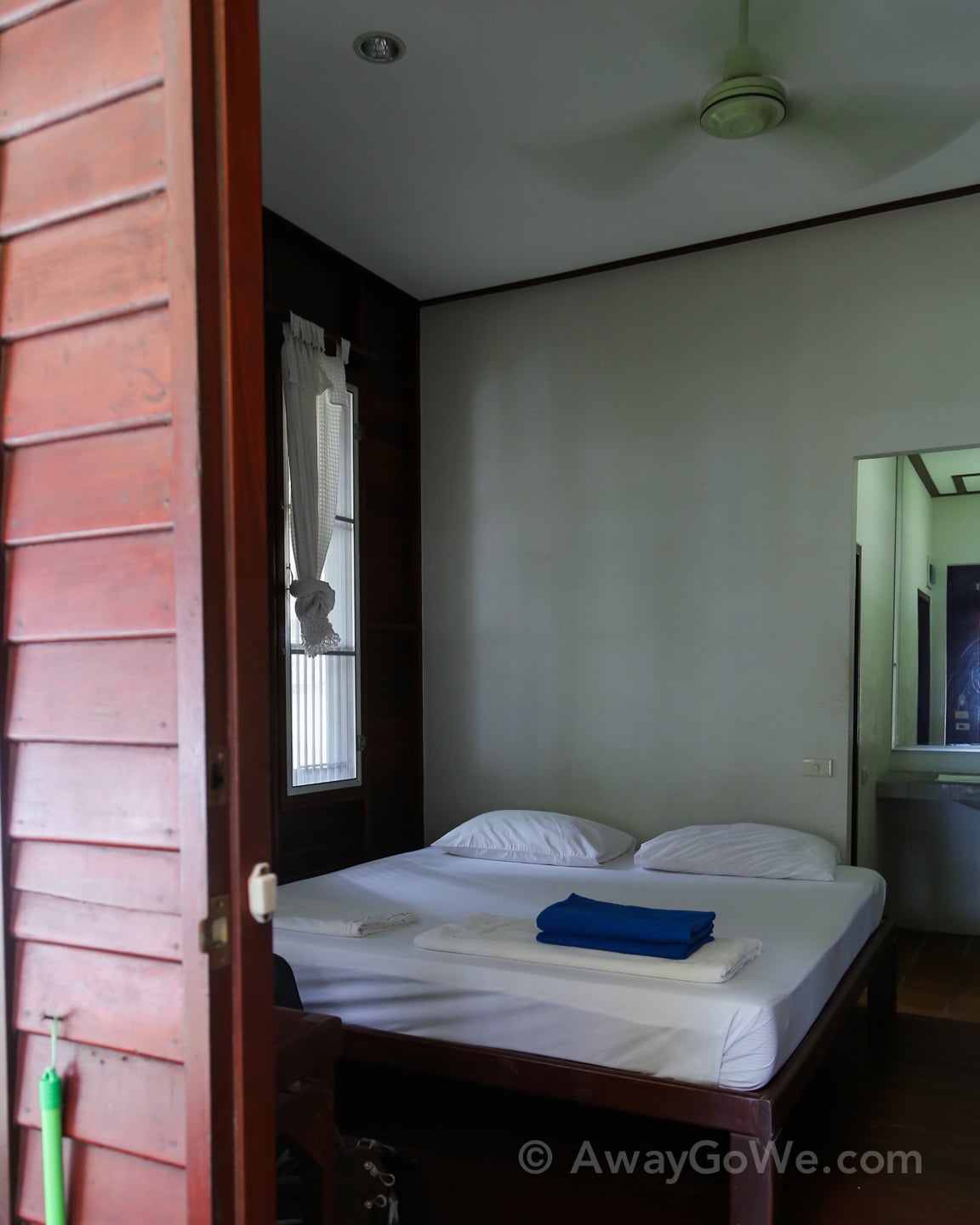
I knew beforehand that our Tubtim bungalow was not going to be right on the beach, but went for the fan room anyway, which was quite a bit cheaper than the A/C bungalows — and there’s always the hope of being lulled to sleep by the sound of crashing waves. While we were too far back from the beach to hear the languid Thai surf, our gamble paid off. The room was never unbearable and the music from the beach bars ended at a reasonable time or was not loud enough to make it to our bungalow.
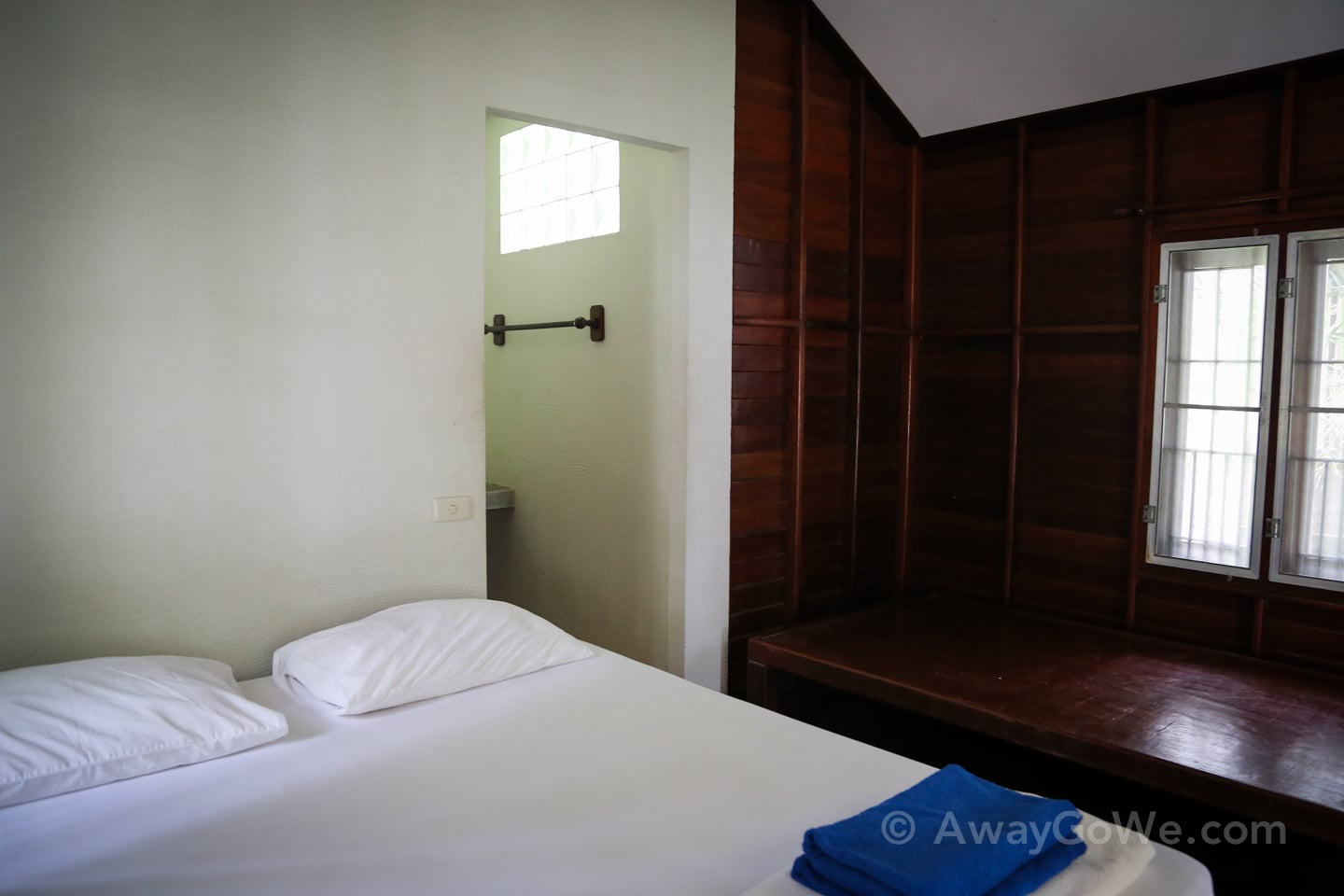
I also knew ahead of time which bungalow we had booked (A-30). From the photos, I could tell that this bungalow had a small alcove with a platform, just big enough for Noe’s portable crib. However, as we arrived a couple hours before check-in, the bungalow wasn’t ready yet. The staff was nice enough to offer another bungalow, but after taking a look at it, we opted to wait until A-30 became available as the other bungalow was much narrower and shared a wall with another unit.
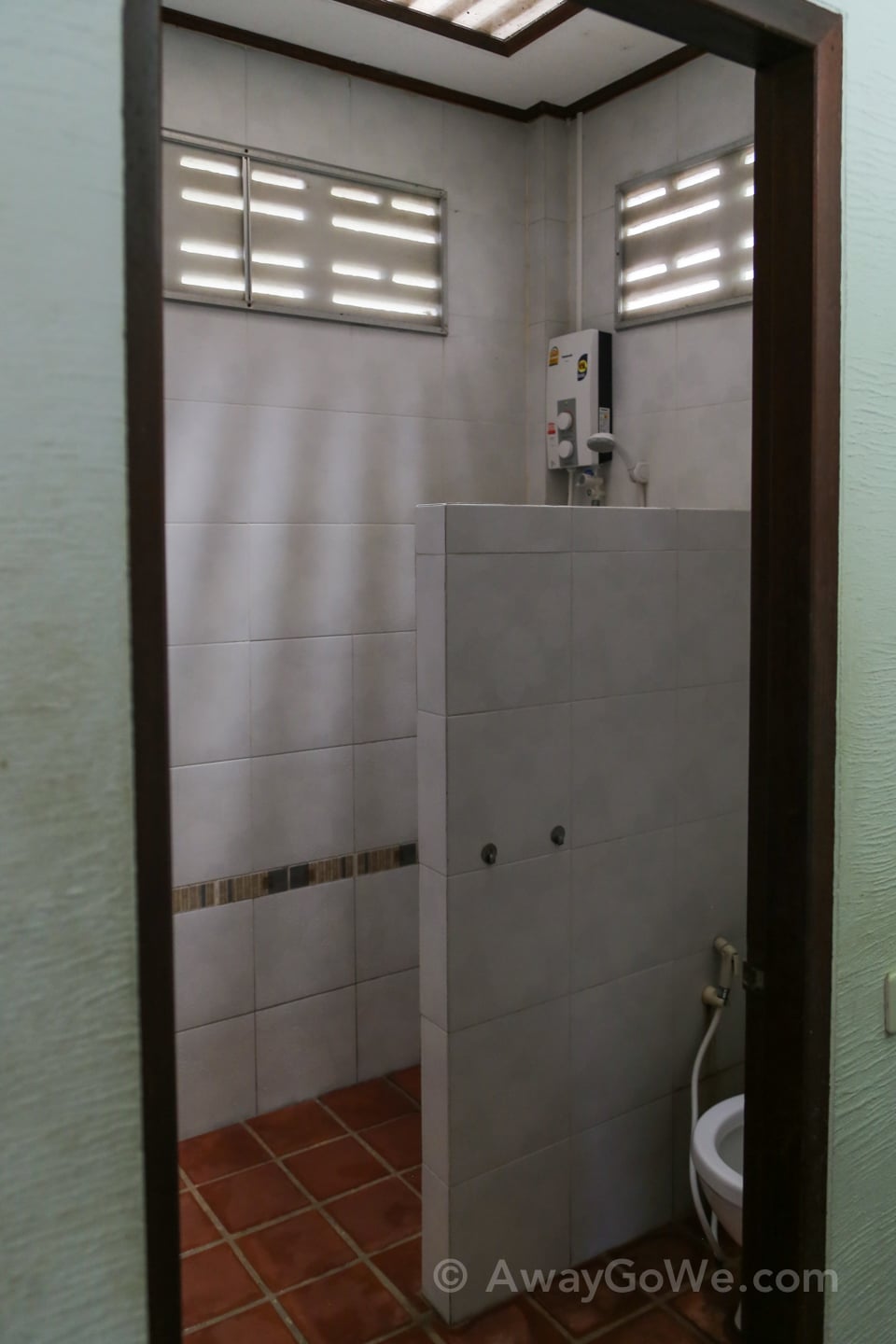
Additionally, the fan bungalows with “hot shower” are far superior to the much older fan bungalows with “cold shower,” so if you’re deciding between the two, know that it isn’t merely a decision between hot and cold showers at the beach. The hot shower bungalows are quite nice, with a very recently-constructed feel to them. They also offer modern bathrooms and a spacious front balcony. If you’re on a tight budget, the cold shower bungalows certainly seem sufficient, if quite aged, but weren’t that much cheaper when we booked.
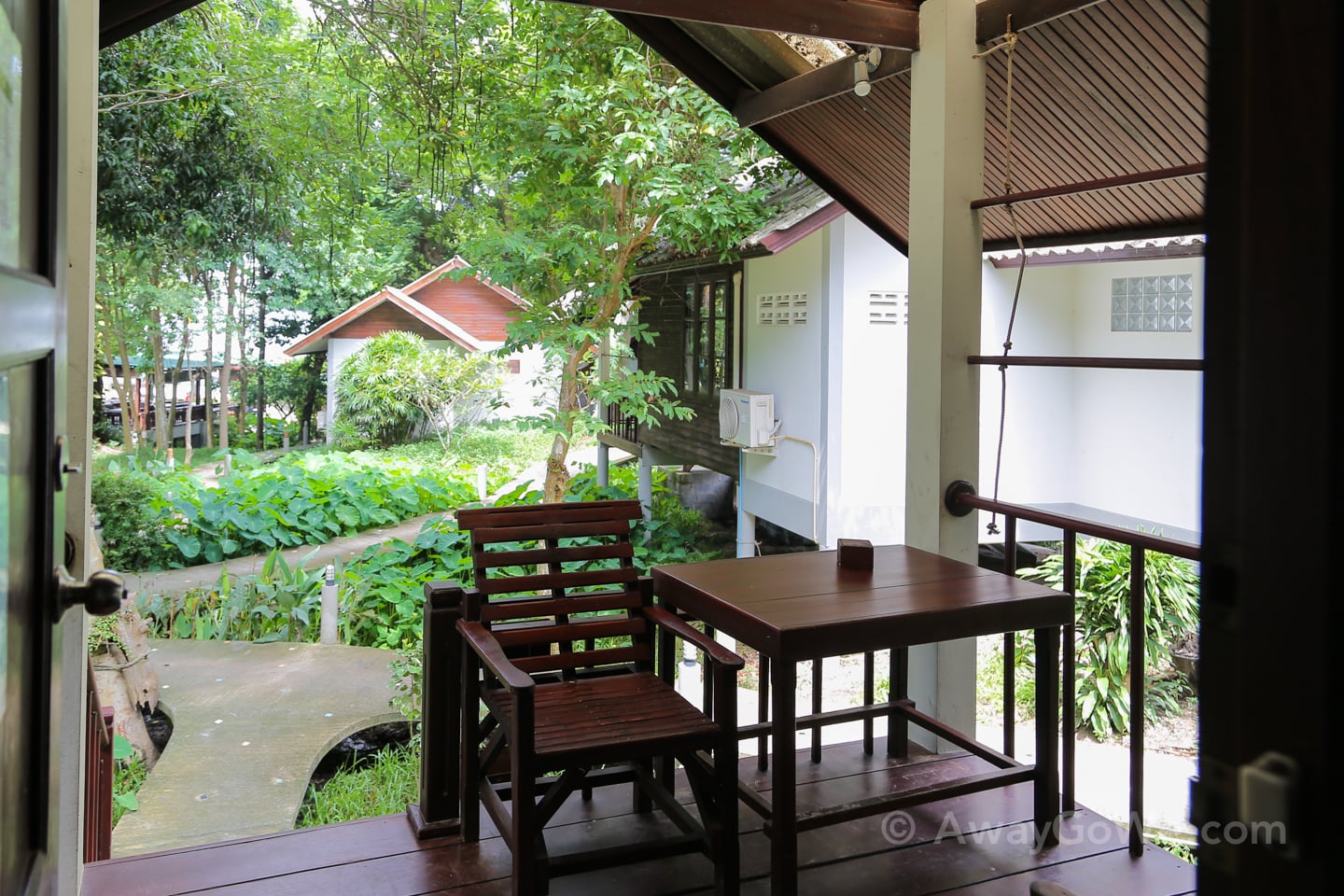
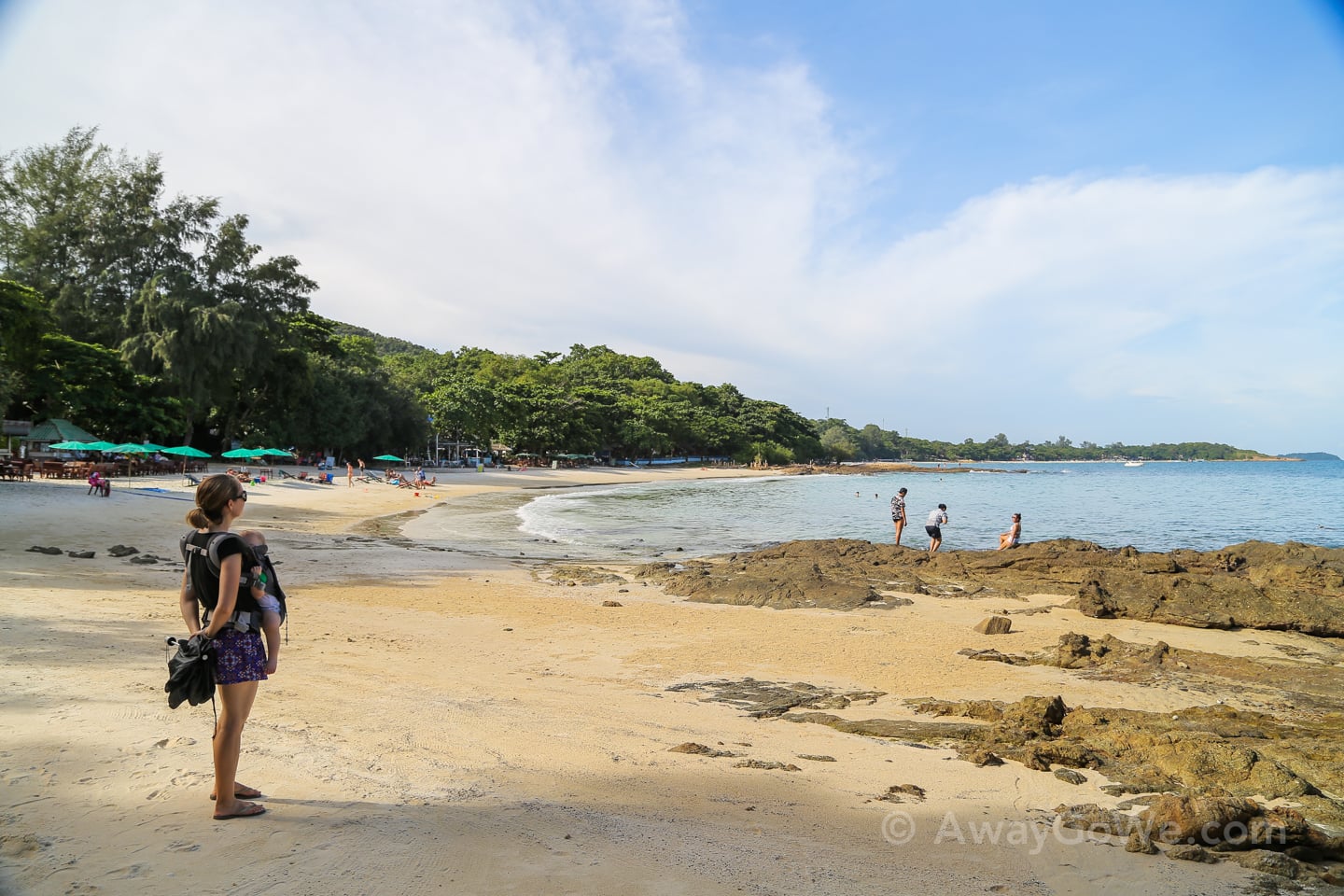
A bit before sunset, we left Tubtim and headed north. The walk between the coves, utilizing a combination of footpath and beach, is much more relaxing than hiking up to the main road. We must have done this walk at least a half dozen times before leaving Koh Samet. Even after dark, there are only a couple of areas that were unlit, but the route never felt unsafe or uninviting.
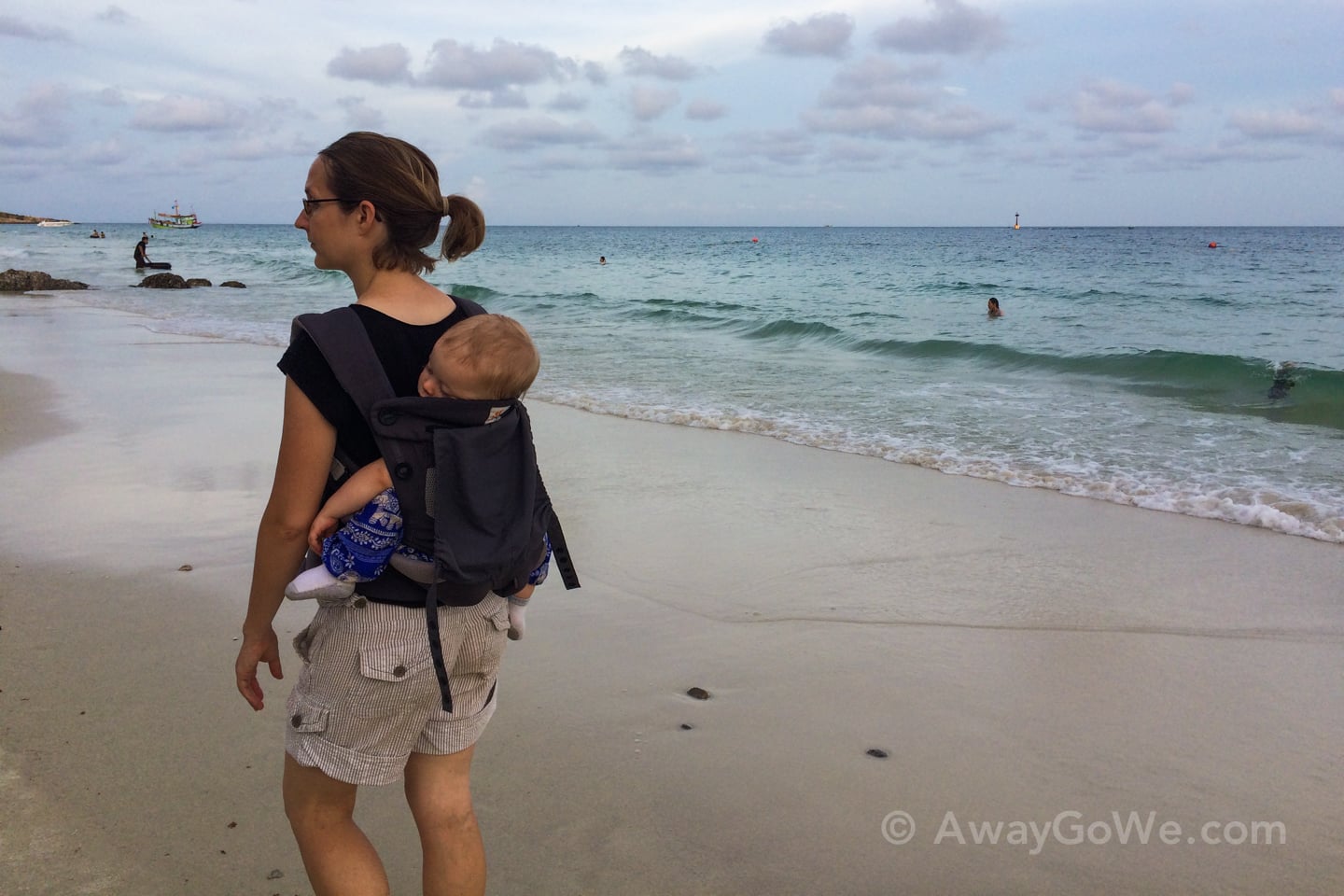
It was interesting experiencing the different vibes at each beach moving north: Tubtim and Phudsa (which isn’t so much a beach as a rocky outcrop) was definitely the most relaxed of them all; Phai, the next cove north, had a small congregation of restaurants with a huge amount of seating, which gave that beach a more touristy feel; like Phusda, Naga mostly occupied a rocky headland, with a creepy — recently vacated — feel to it, with the exception of Naga Bar, the beach’s main destination; finally, Hin Khok and Sai Kaew constitute the busiest and most densely developed section of the island, with bars and beachgoers lining the entire stretch.
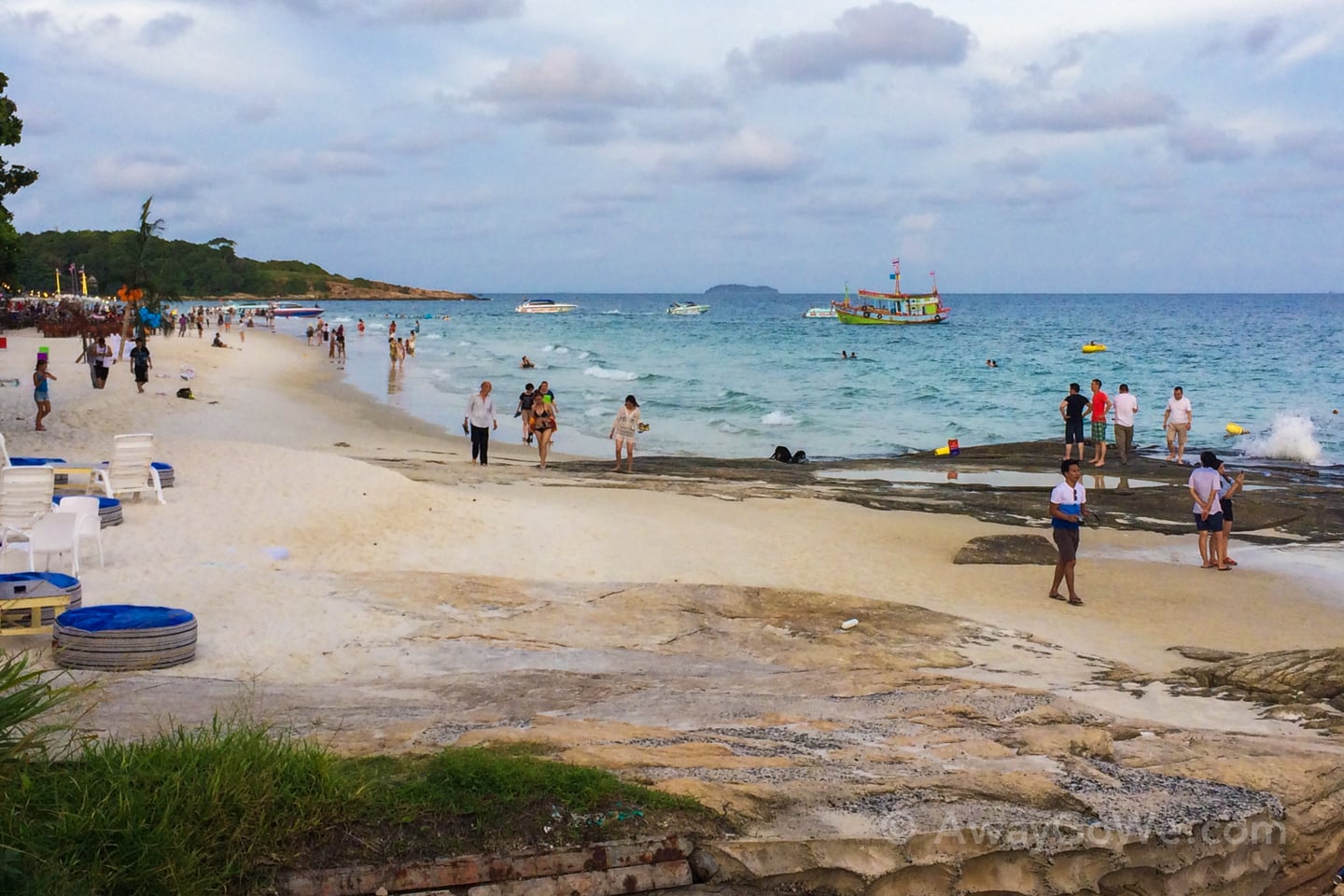
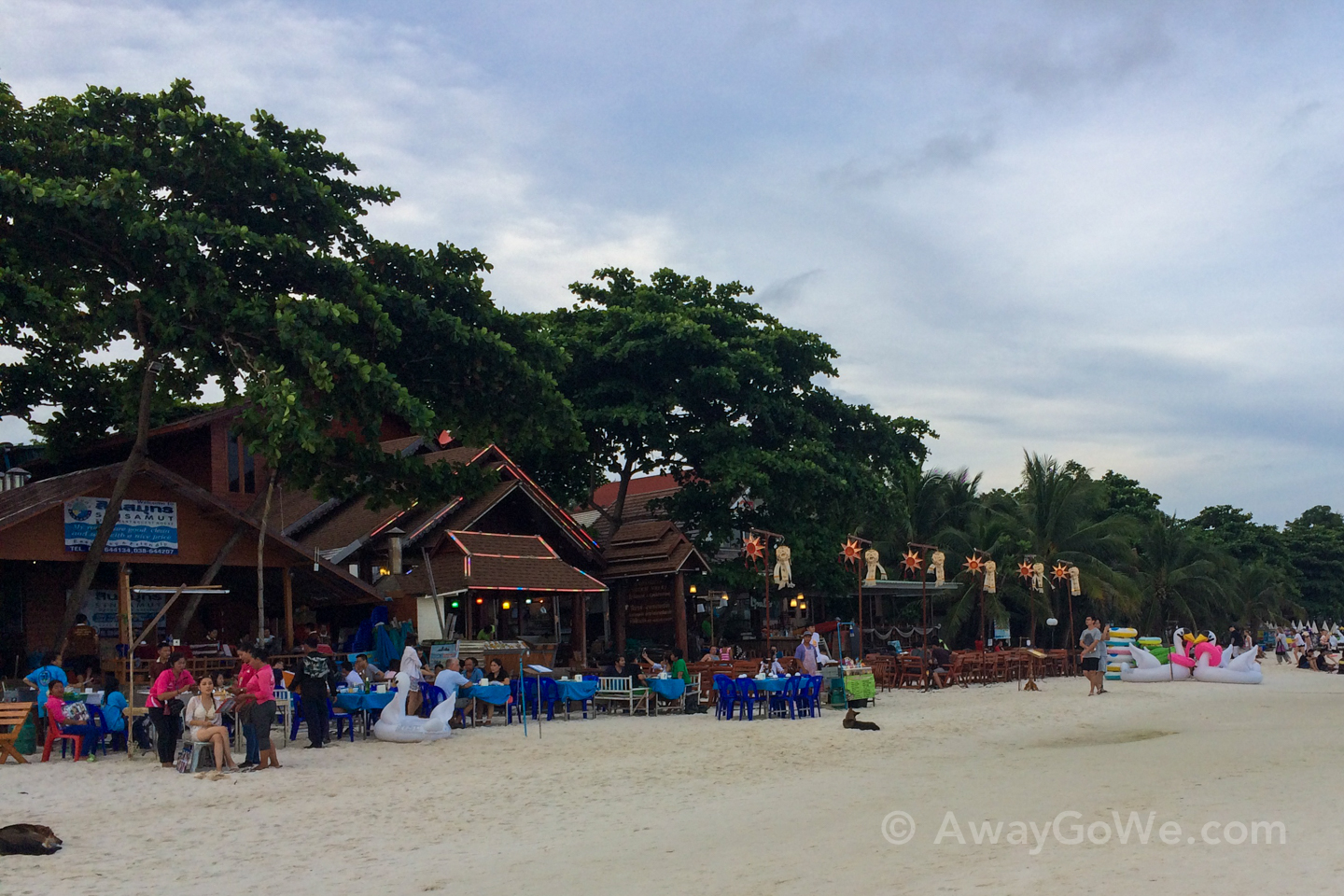
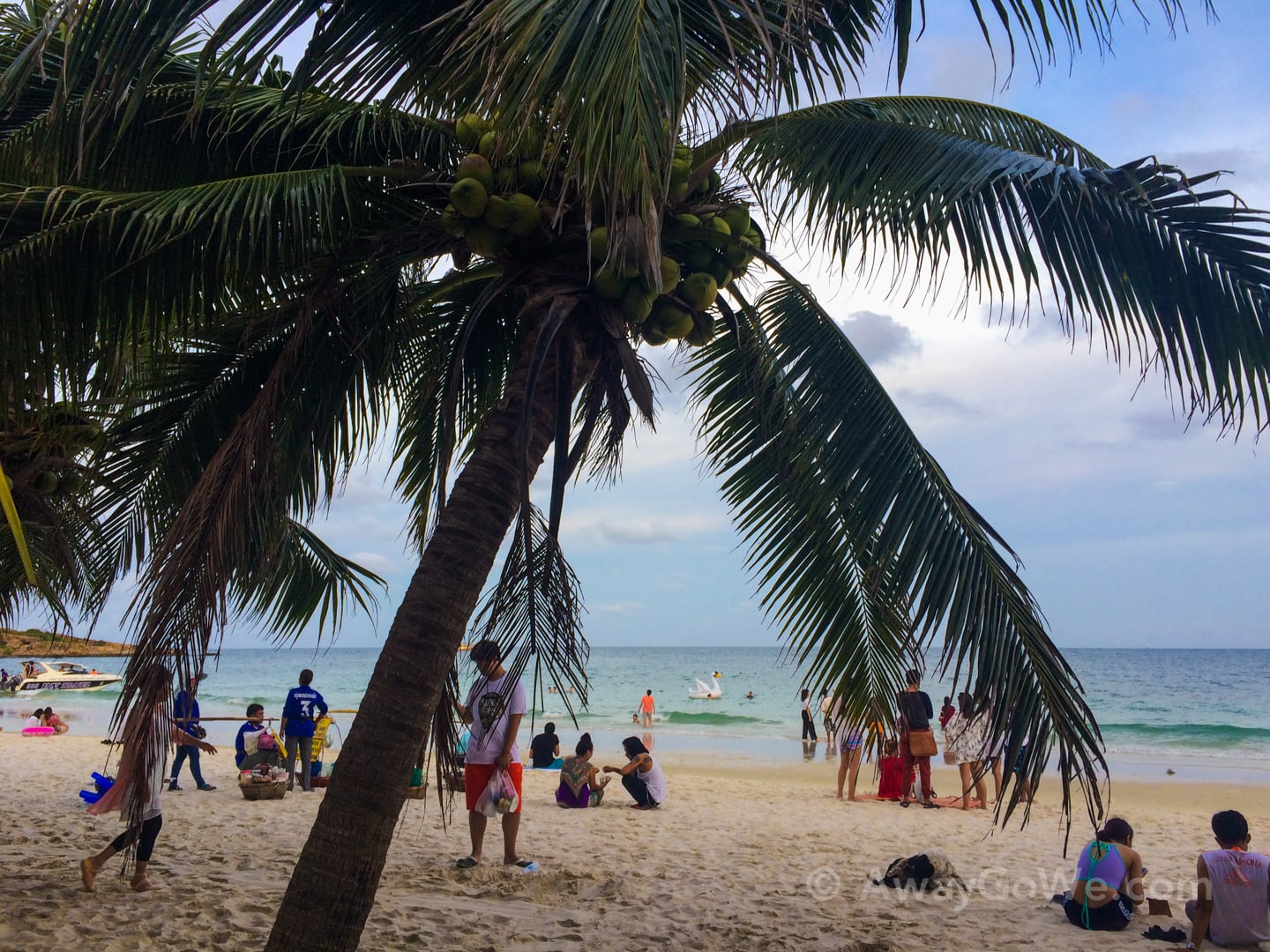
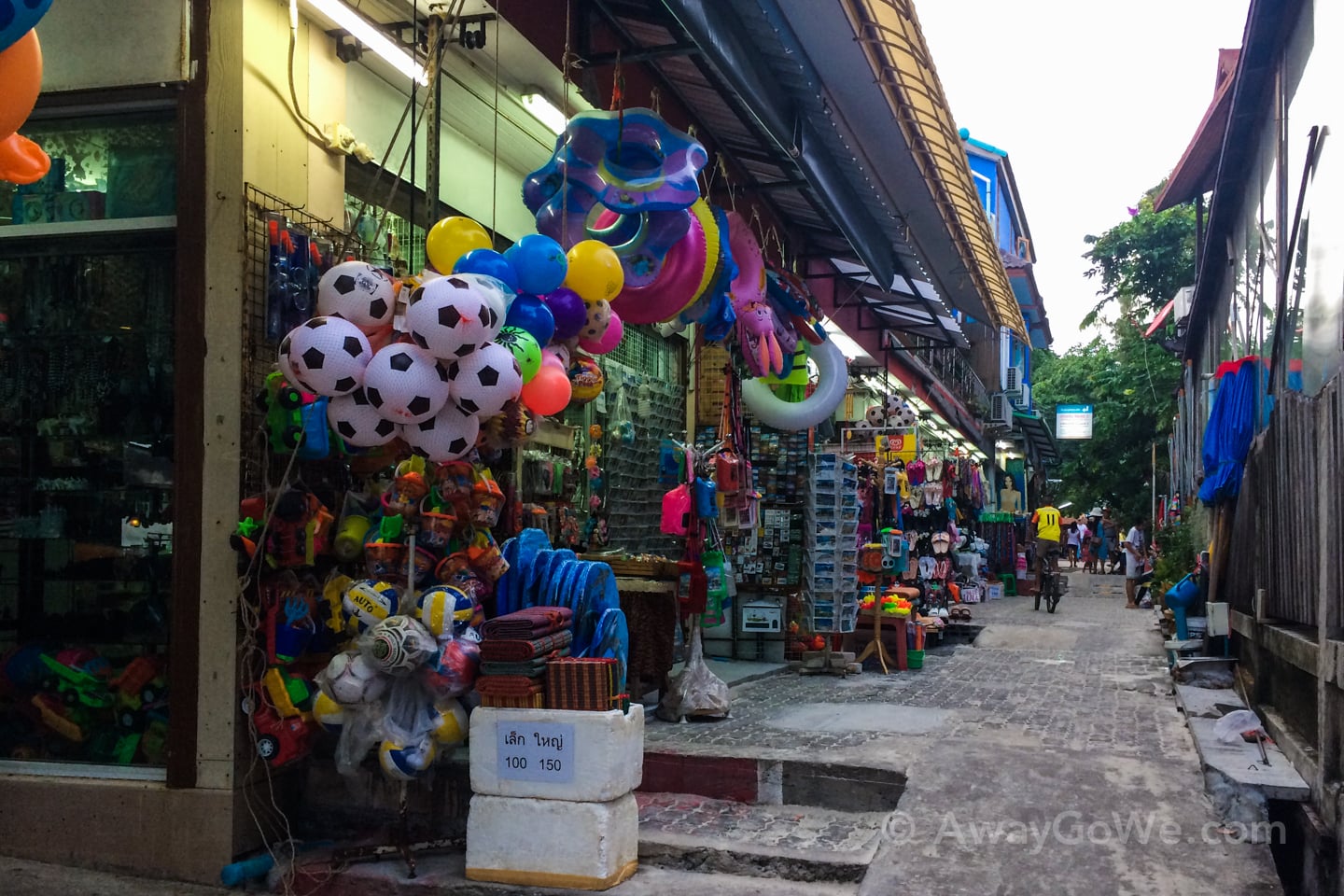
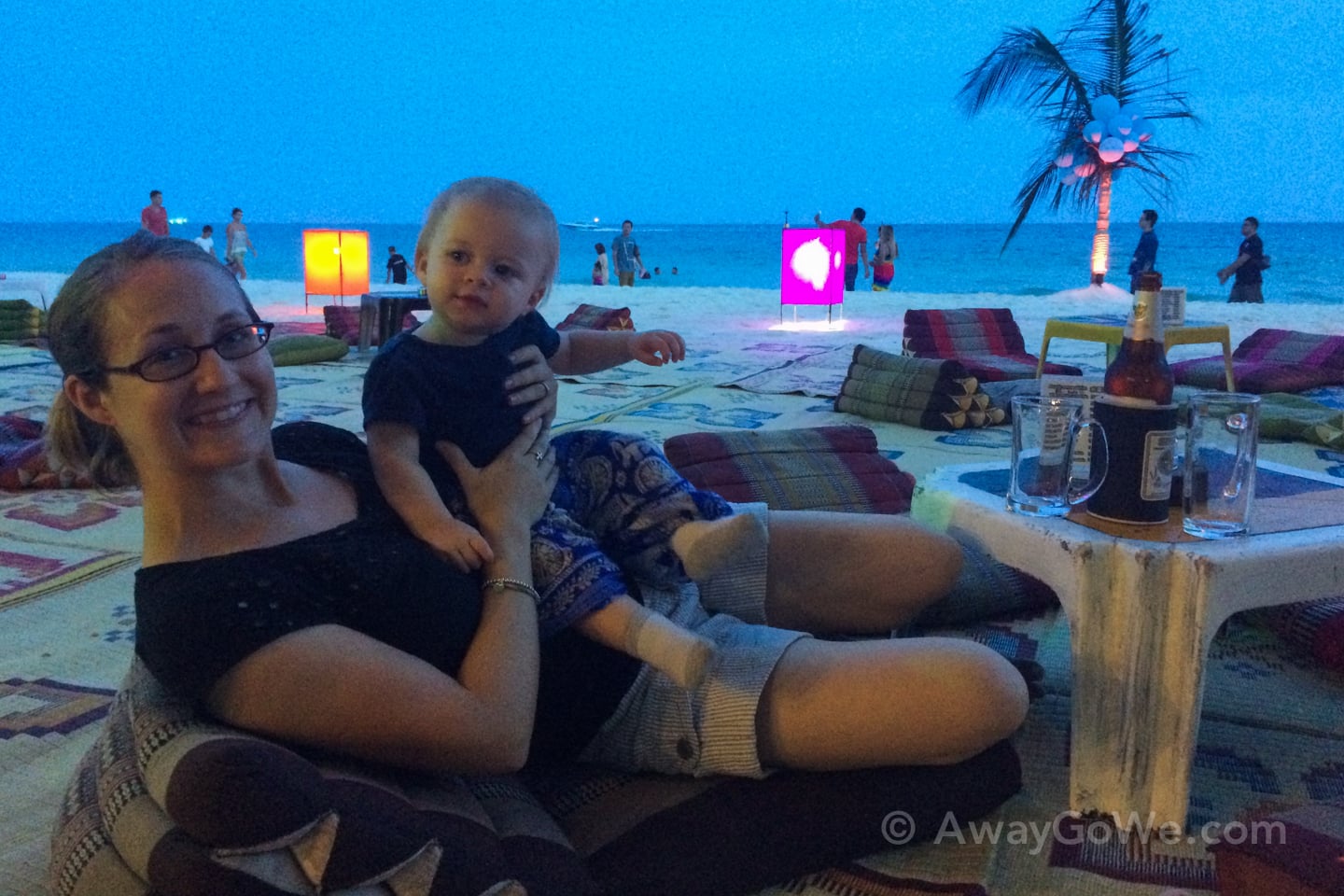
On our way back to Tubtim, the comfiest place along the beach naturally caught our eye. In all our beach wanderings, we haven’t visited a single other country that so consistently employs the grungy-but-oh-so-comforable-mats-and-cushions-on-the-ground-at-the-beach motif. It’s definitely a Thai thing, and it’s definitely a good thing.
Some of our best memories are from lounging at these sorts of places — cocktail in hand — on Ko Tao and Railay five years ago. My only disappointment is that Koh Samet didn’t employ the motif more frequently, which only made places like Friendly Bar (above and below) and Ploy Thalay (featured in later posts) all the more special.
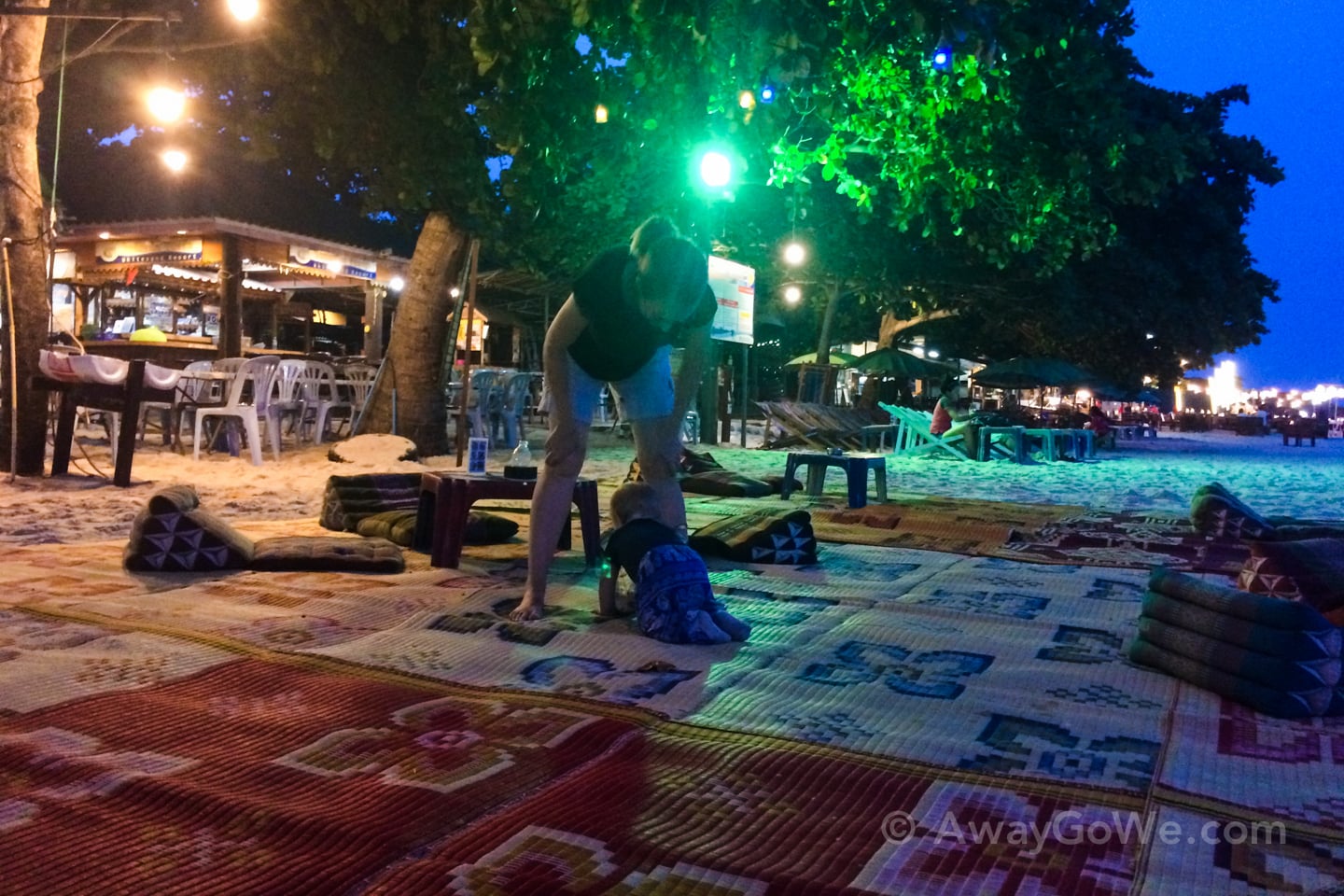
Though unsure of the strange feel of the reed mats, Noe enjoyed scurrying around the “dining room.” We were early, which meant he essentially had the run of the place as well.
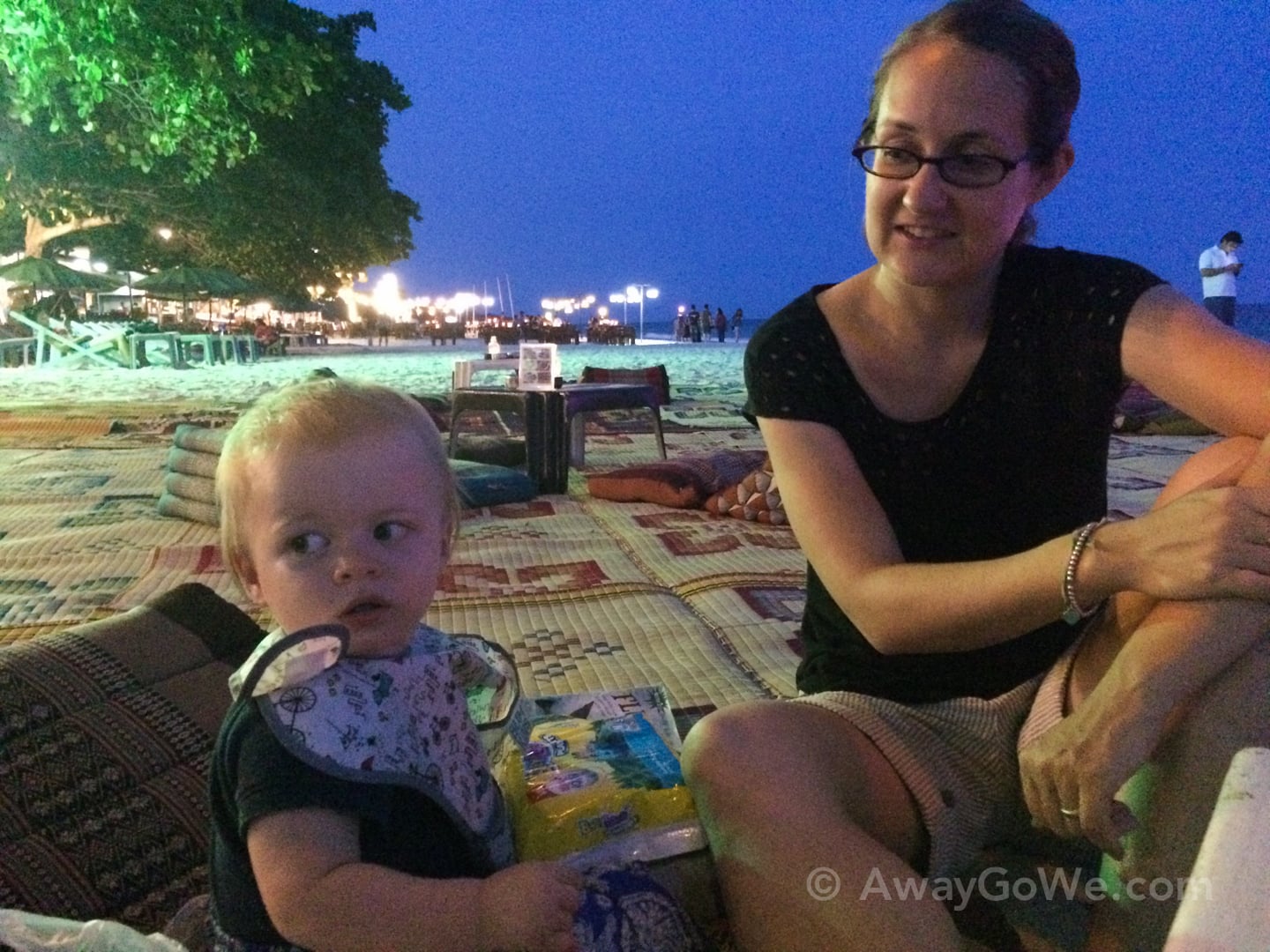
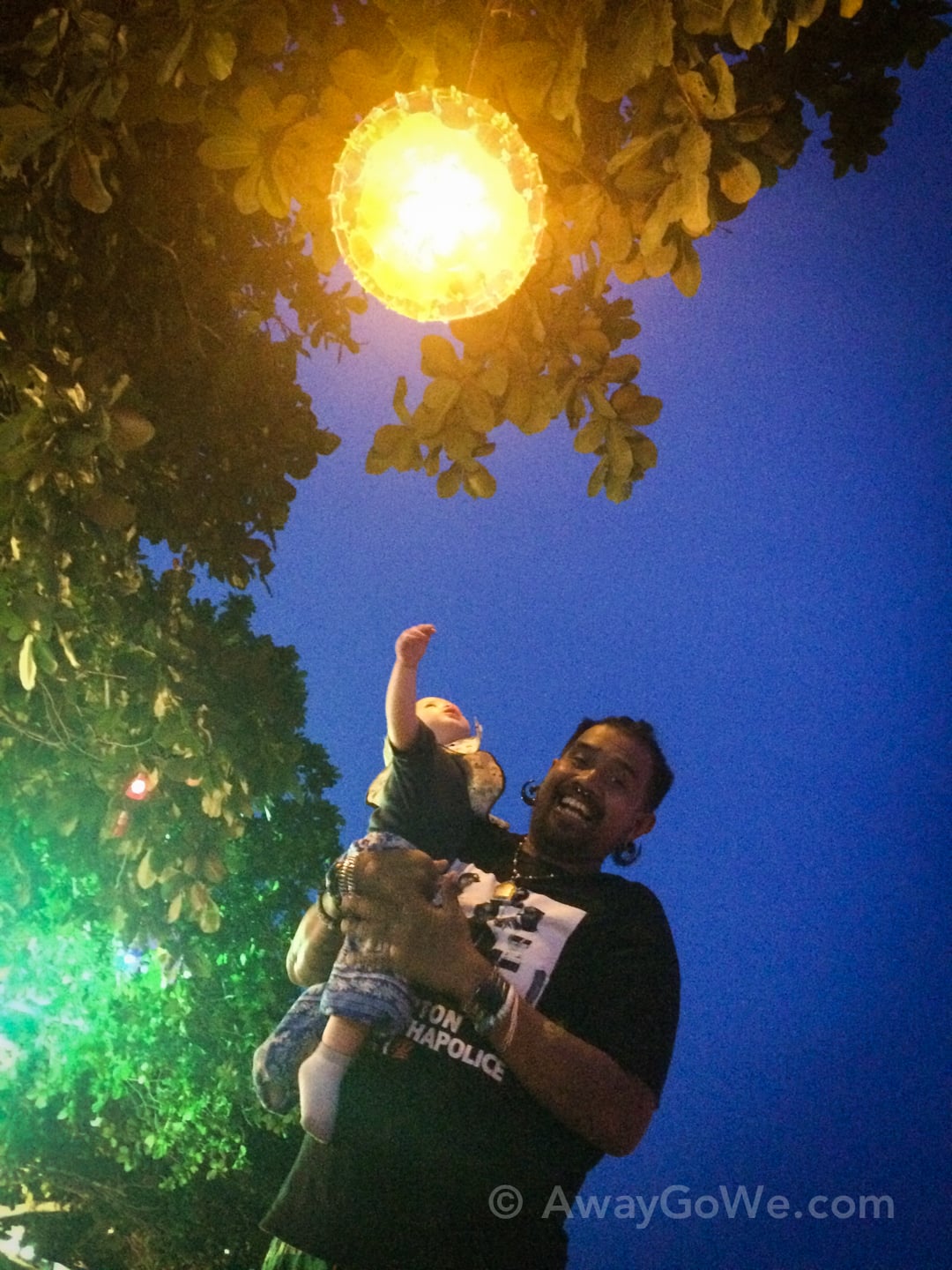
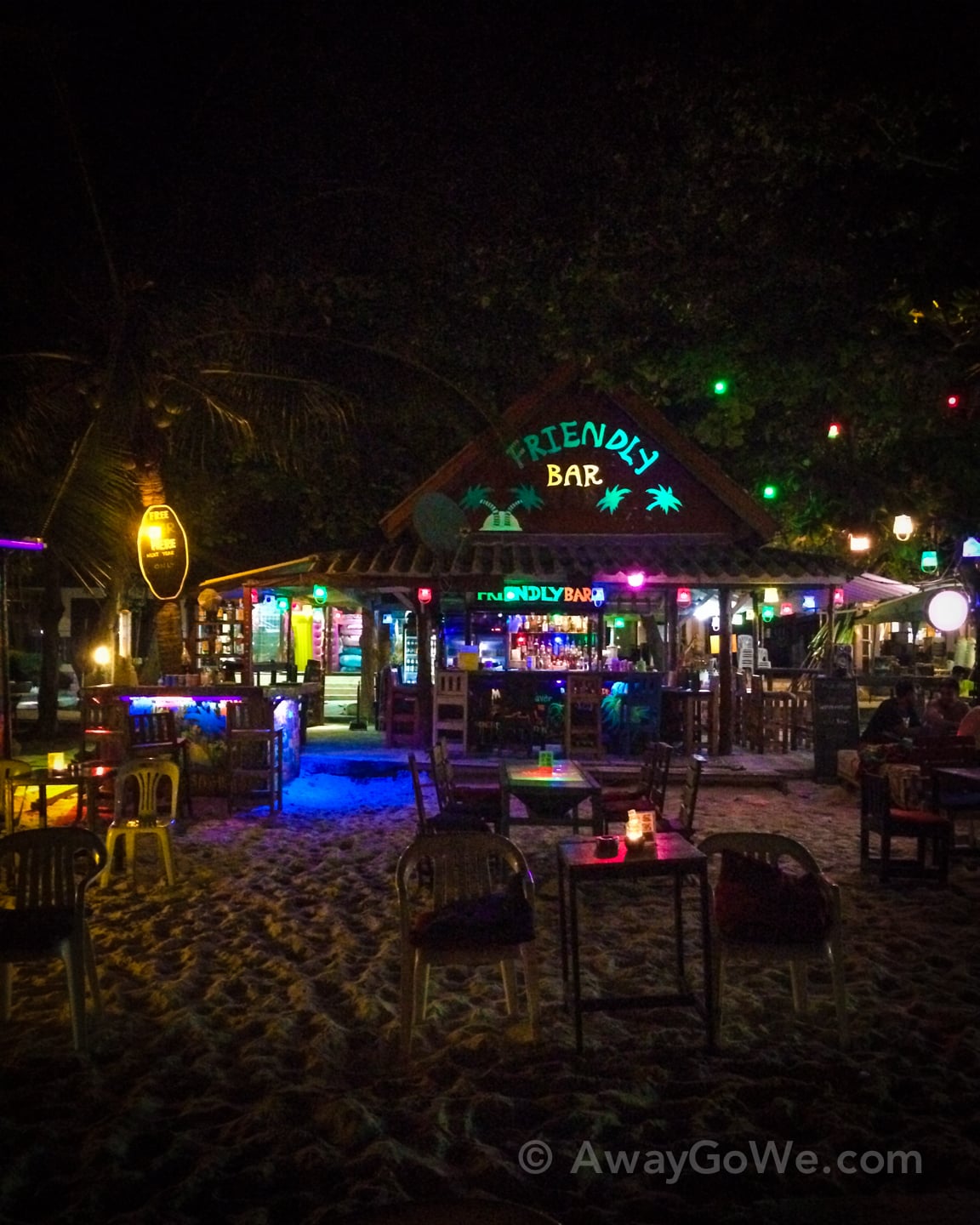
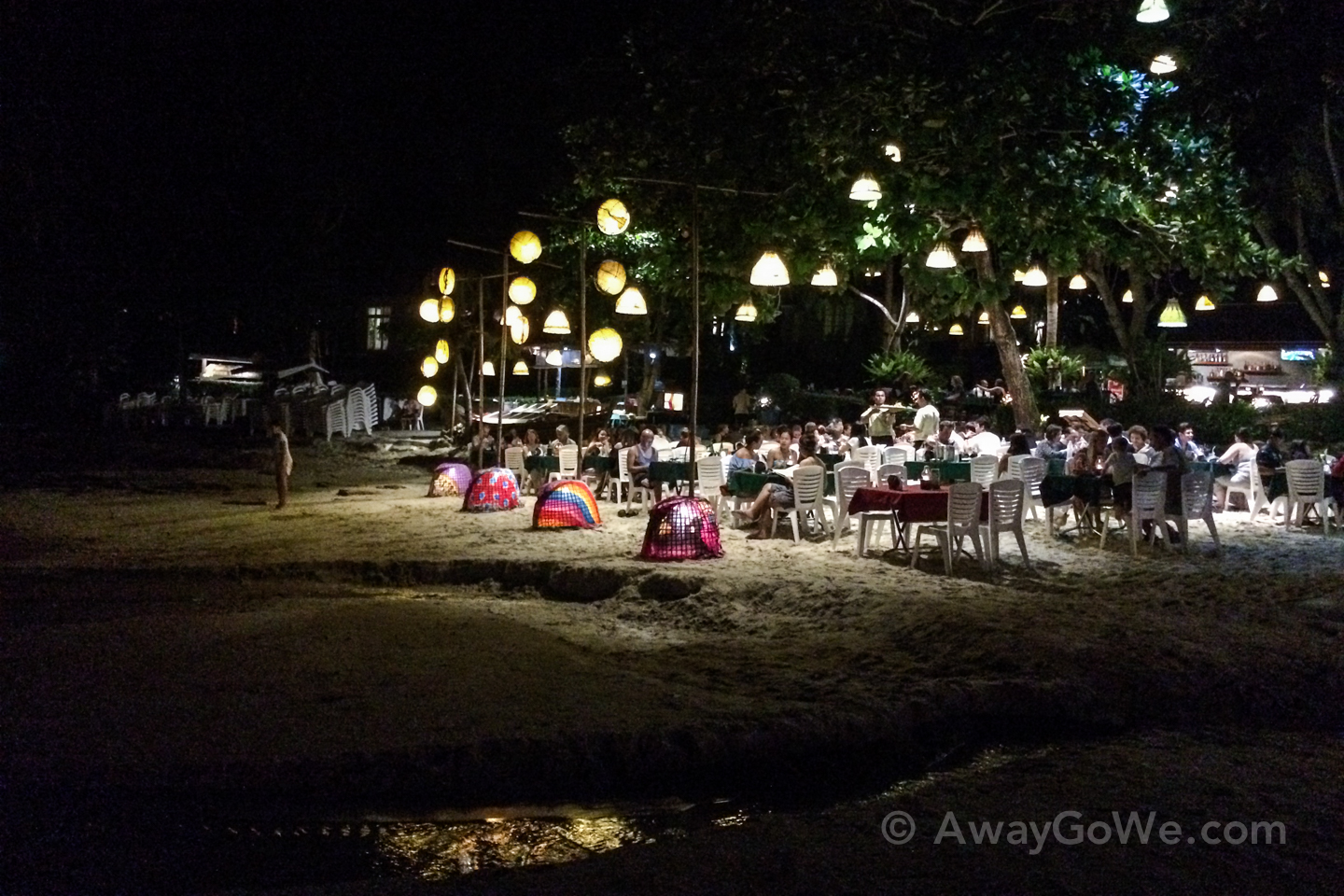
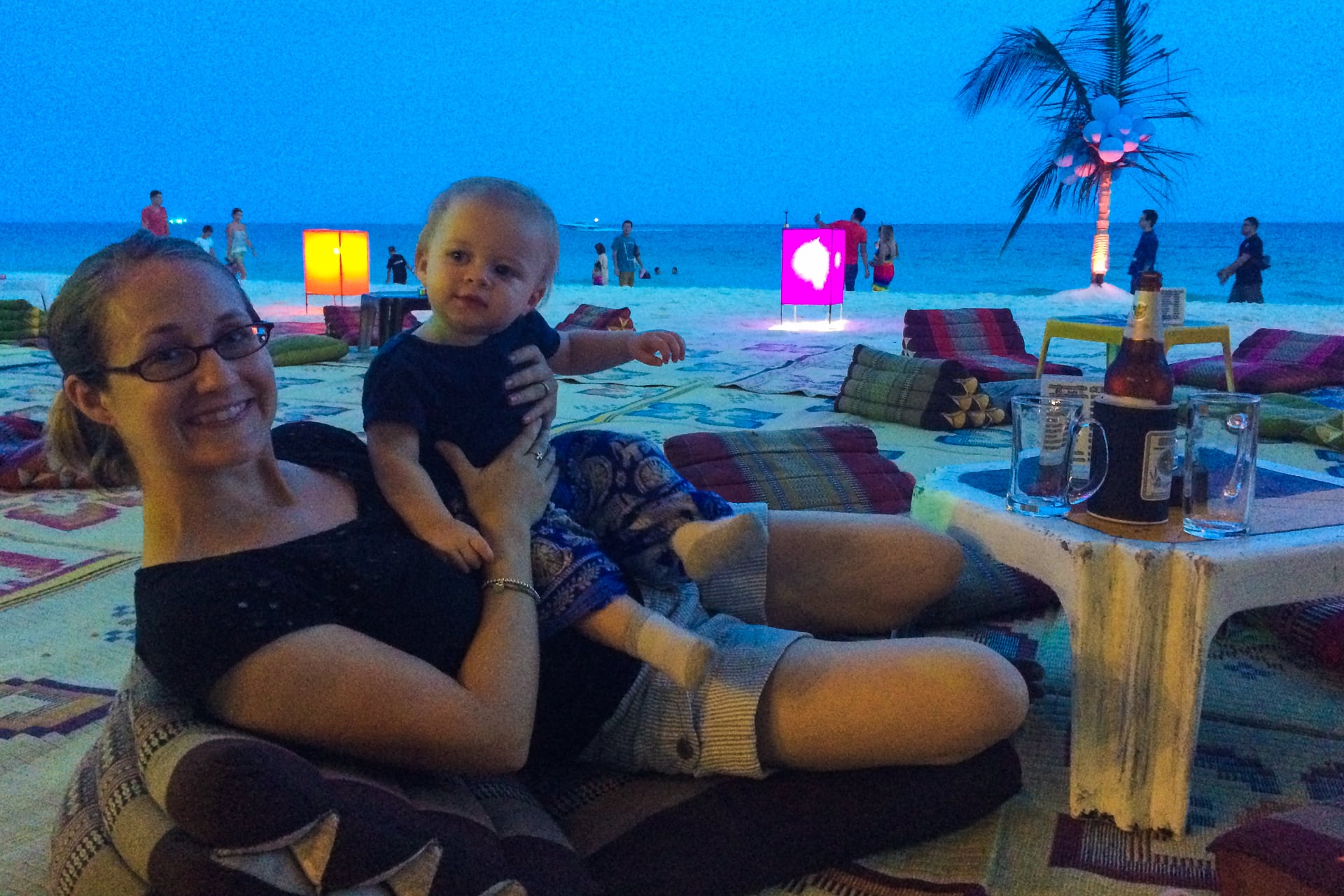
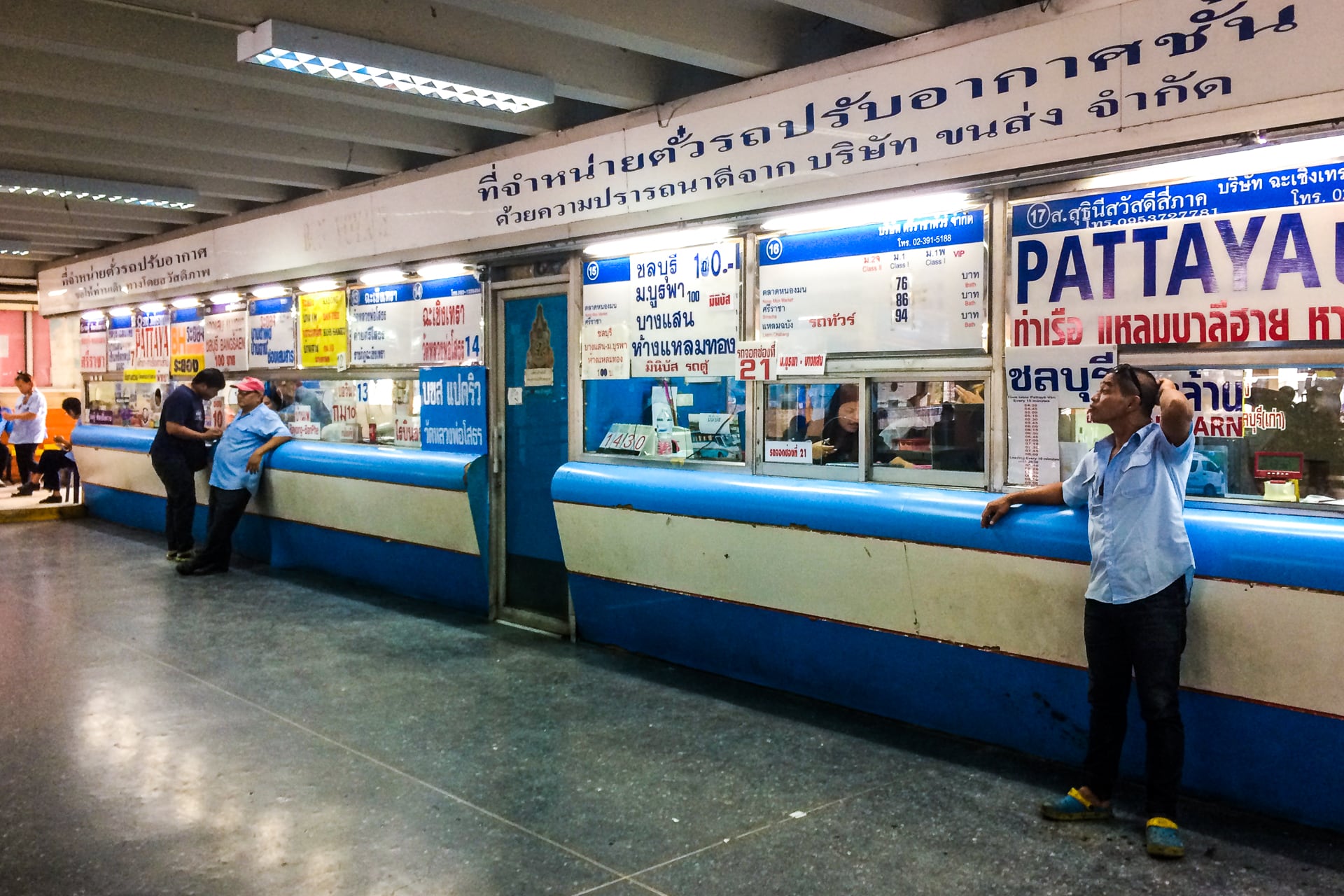
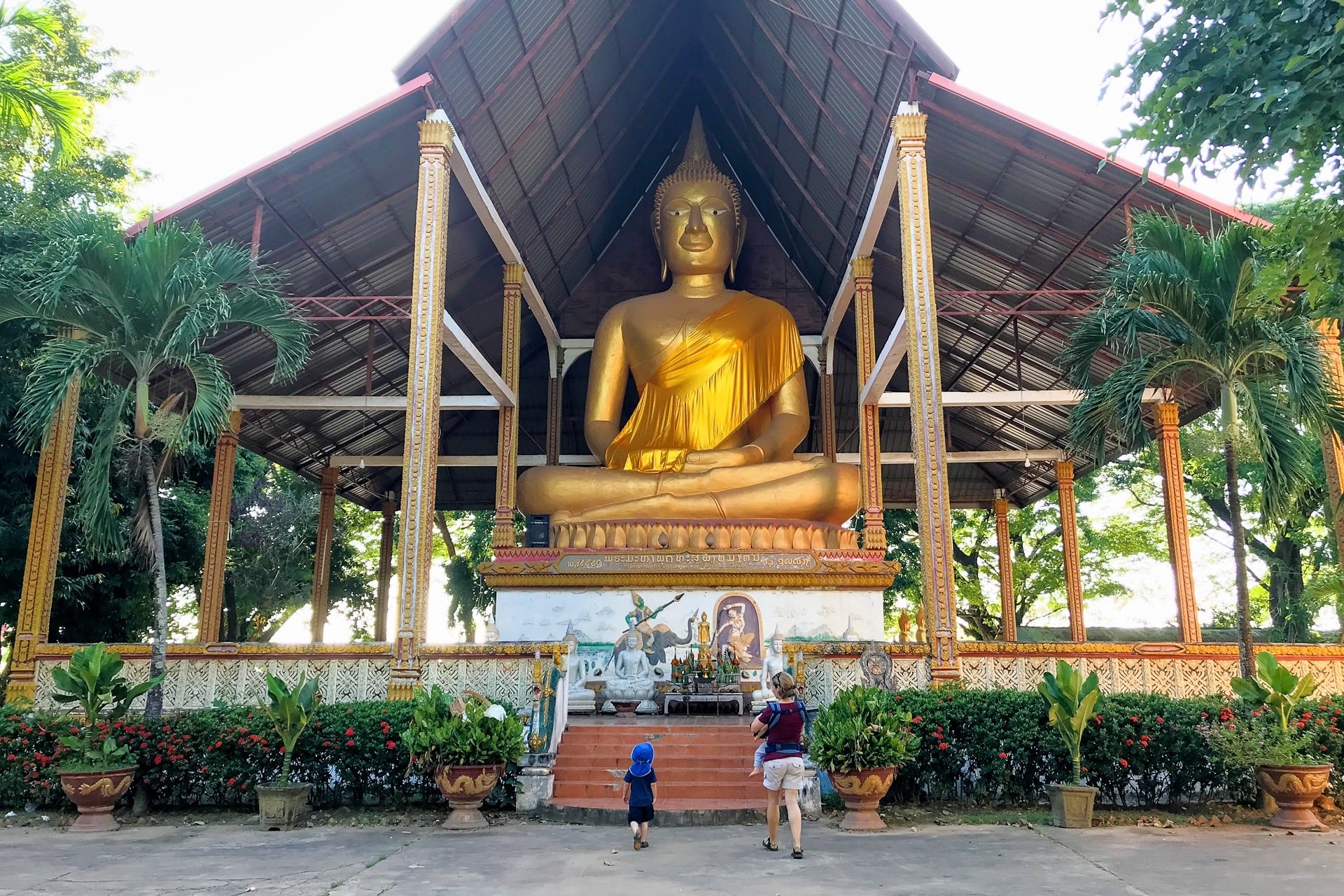
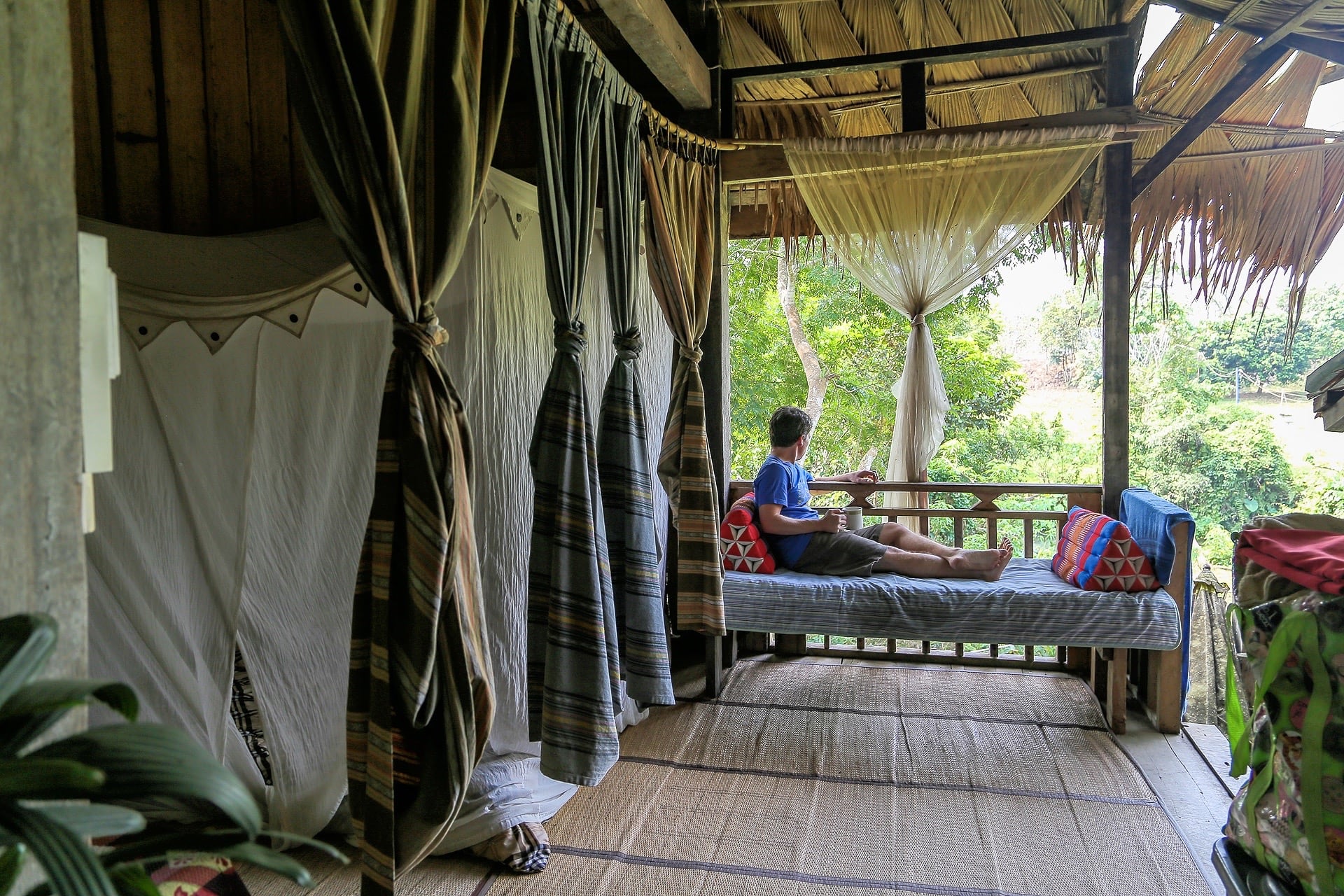
Did anyone offer to “harvest” the coconuts from the tree? Great pictures and descriptions of the beach and bungalows.